#1911-2016 chinese
Explore tagged Tumblr posts
Text









Today I am going to do part time job in the countryside.
開工/好個霧濛濛又詩情畫意的清晨。。。我懷著感恩的心~打零工。😂 💪 Lan~*
如要鍛煉一個能做大事的人,必定要叫他吃苦受累,百不稱心,才能養成堅忍的性格。一個人經過不同程度的鍛煉,就獲得不同程度的修養,不同程度的效益。好比香料,搗得愈碎,磨得愈細,香得愈濃烈。
我們曾如此渴望命運的波瀾,到最後才發現:人生最曼妙的風景,竟是內心的淡定與從容……我們曾如此期盼外界的認可,到最後才知道:世界是自己的,與他人毫無關係!
─ 楊絳 Yang Jiang (1911-2016) She was a Chinese playwright, author, and translator. She wrote several successful comedies, and was the first Chinese person to produce a complete Chinese version of Miguel de Cervantes’ novel Don Quixote.
#chu lan#朱蘭皮藝#fine craft artist#leather art artist#part time jobs#beautiful life#楊絳#yang jian#1911-2016 chinese
32 notes
·
View notes
Text
Events 6.16 (after 1910)
1911 – IBM founded as the Computing-Tabulating-Recording Company in Endicott, New York. 1922 – General election in the Irish Free State: The pro-Treaty Sinn Féin party wins a large majority. 1925 – Artek, the most famous Young Pioneer camp of the Soviet Union, is established. 1930 – Sovnarkom establishes decree time in the USSR. 1933 – The National Industrial Recovery Act is passed in the United States, allowing businesses to avoid antitrust prosecution if they establish voluntary wage, price, and working condition regulations on an industry-wide basis. 1940 – World War II: Marshal Henri Philippe Pétain becomes Chief of State of Vichy France (Chef de l'État Français). 1940 – A Communist government is installed in Lithuania. 1948 – Members of the Malayan Communist Party kill three British plantation managers in Sungai Siput; in response, British Malaya declares a state of emergency. 1955 – In a futile effort to topple Argentine President Juan Perón, rogue aircraft pilots of the Argentine Navy drop several bombs upon an unarmed crowd demonstrating in favor of Perón in Buenos Aires, killing 364 and injuring at least 800. At the same time on the ground, some soldiers attempt to stage a coup but are suppressed by loyal forces. 1958 – Imre Nagy, Pál Maléter and other leaders of the 1956 Hungarian Uprising are executed. 1961 – While on tour with the Kirov Ballet in Paris, Rudolf Nureyev defects from the Soviet Union. 1963 – Soviet Space Program: Vostok 6 mission: Cosmonaut Valentina Tereshkova becomes the first woman in space. 1963 – In an attempt to resolve the Buddhist crisis in South Vietnam, a Joint Communique was signed between President Ngo Dinh Diem and Buddhist leaders. 1972 – The largest single-site hydroelectric power project in Canada is inaugurated at Churchill Falls Generating Station. 1976 – Soweto uprising: A non-violent march by 15,000 students in Soweto, South Africa, turns into days of rioting when police open fire on the crowd. 1977 – Oracle Corporation is incorporated in Redwood Shores, California, as Software Development Laboratories (SDL), by Larry Ellison, Bob Miner and Ed Oates. 1981 – US President Ronald Reagan awards the Congressional Gold Medal to Ken Taylor, Canada's former ambassador to Iran, for helping six Americans escape from Iran during the hostage crisis of 1979–81; he is the first foreign citizen bestowed the honor. 1989 – Revolutions of 1989: Imre Nagy, the former Hungarian prime minister, is reburied in Budapest following the collapse of Communism in Hungary. 1997 – Fifty people are killed in the Daïat Labguer (M'sila) massacre in Algeria. 2000 – The Secretary-General of the UN reports that Israel has complied with United Nations Security Council Resolution 425, 22 years after its issuance, and completely withdrew from Lebanon. The Resolution does not encompass the Shebaa farms, which is claimed by Israel, Syria and Lebanon. 2002 – Padre Pio is canonized by the Roman Catholic Church. 2010 – Bhutan becomes the first country to institute a total ban on tobacco. 2012 – China successfully launches its Shenzhou 9 spacecraft, carrying three astronauts, including the first female Chinese astronaut Liu Yang, to the Tiangong-1 orbital module. 2012 – The United States Air Force's robotic Boeing X-37B spaceplane returns to Earth after a classified 469-day orbital mission. 2013 – A multi-day cloudburst, centered on the North Indian state of Uttarakhand, causes devastating floods and landslides, becoming the country's worst natural disaster since the 2004 tsunami. 2015 – American businessman Donald Trump announces his campaign to run for President of the United States in the upcoming election. 2016 – Shanghai Disneyland Park, the first Disney Park in Mainland China, opens to the public. 2019 – Upwards of 2,000,000 people participate in the 2019–20 Hong Kong protests, the largest in Hong Kong's history.
1 note
·
View note
Text
Baron Roman Ungern von Sternberg, The Man Who Would Be Mongolian Emperor
New Post has been published on https://china-underground.com/2016/04/11/baron-roman-ungern-von-sternberg-man-mongolian-emperor/
Baron Roman Ungern von Sternberg, The Man Who Would Be Mongolian Emperor
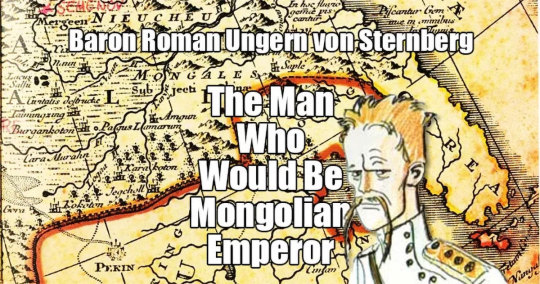
Baron Roman Ungern von Sternberg (Roman Fedorovich Ungern von Shternberg), also known by the epithet Mad Baron (or Black Baron; January 22, 1886, September 15, 1921), fought the White Movement during the Russian Civil War and later was a bloodthirsty warlord.
He attempted to establish a monarchy in Mongolia and the lands to the east of Lake Baikal.
Related article: Haunting images of Mongolia (1913), Japanese war prints of the Sino-Japanese war, Fascinating Xinhai Revolution images, the Chinese Revolution of 1911, history of the First Sino-Japanese War
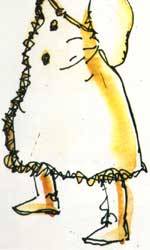
He was born in Graz, Austria by a Balkan family and grew up in Tallinn in Estonia, which at the time was not yet entered in the orbit of Russia, in the custody of his stepfather Oscar von Hoyningen-Huene.
After attending the Pavlovsk Military Academy in St. Petersburg, he served in Siberia where he came in contact with the nomadic lifestyle of Mongolian and Buryat tribes. During World War II, Ungern von Sternberg fought in Galicia.
In this period he was considered a brave soldier, but sometimes reckless and unstable. General Wrangel mentioned in his memoirs fears to promote Ungern-Sternberg.
After the February Revolution of 1917, he was sent by the provincial government in Eastern Russia, under the command of Grigori Semenov to establish a military garrison.
With the October Revolution of 1917, Semenov and his right arm, Ungern von Sternberg opposed the Bolsheviks.
In the following months, Ungern von Sternberg distinguished himself for his cruelty towards the local population and his own subordinates, earning the nickname Bloody Baron. For his decidedly eccentric attitudes, it was also called Crazy Baron.
Semenov and Ungern von Sternberg, though anti-Bolsheviks, were not part of the White Movement and did not recognize the authority of Admiral Aleksandr Kolchak.
They were instead supported both financially and from a military point of view by the Japanese. The Japanese hoped to set up a puppet state headed by Semenov in Eastern Russia. For Kolchak who believed in Russia as a powerful and indivisible entity, this was an act of treason.
The troops of Ungern von Sternberg were a mixture of Russian soldiers, Cossacks, and Buryat nomad’s ethnicity. They targeted the supply trains of the Bolsheviks and of the White movement.
Semenov and Ungern von Sternberg were successful against the White Movement as the base of operations of Admiral Kolchak was located in the heart of Central Siberia and the trains came from Vladivostok, on the Pacific Ocean.
At this point, the railway line of the Trans-Siberian was in their hands. But they chose different paths in 1920 when Ungern decided to become a Lord of the Independent War.
He strongly believed that the monarchy was the only antidote to the corruption and self-destruction of Western civilization. He began to cultivate the idea of restoring the Qing Dynasty of China on the throne and then unifying the countries of the Far East under its flag.
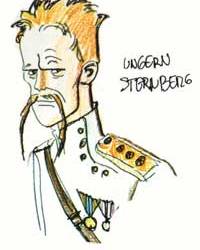
It was also a fanatical anti-Semitic leader and in 1918 he proclaimed to want to exterminate all the Jews and the Russian Communists bringing back the Grand Duke Mikhail, the younger brother of Nicholas II on the Russian throne. Its troops massacred many Jews fleeing even with extremely cruel ways as flaying victims still alive. Since 1919 Mongolia was under the control of the Republic of China forces.
At the turn of 1920 and 1921, the troops of Ungern von Sternberg entered Mongolia called by the deposed Bogd Khan, a civil and religious Mongol leader.
In January 1921 the army of Ungern repeatedly assaulted the capital Urga (now Ulaanbaatar), but without ever succeeding and undergoing numerous losses. He gave orders to set fire to the fields around the city trying to tighten its grip on the besieged. The following February he managed to take control of the city.
On 13 March 1921 Mongolia was proclaimed an independent monarchy, and Ungern von Sternberg became its dictator.
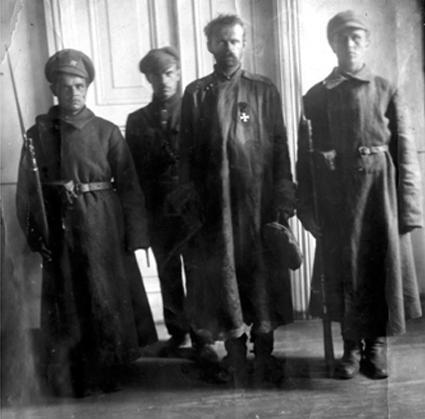
Baron Roman von Ungern-Sternberg before being executed.
Ungern was a mystic fascinated by Eastern religions that believed to be the reincarnation of Genghis Khan and the XIII Dalai Lama: an abnormal mixture of Russian nationalism and Chinese and Mongol beliefs.
His brief reign was characterized by looting and terror.
A Red Army sent to fight Ungern, supported by the leading Mongolian pro-Soviet Shbaatar (Sukhe-Bator), defeated the Mad Baron troops.
In May Ungern von Sternberg tried to invade the territory of Russia at Troitskosavsk (now Kyakhta, Buryatia).
After some initial successes in May and June, in the summer he was defeated by the Soviet counteroffensive and was arrested on August 21, 1921. After a summary trial, he was executed in Novonikolayevsk (Novosibirsk today).
Before being shot, he swallowed his St. George Cross medal of honor, to prevent it from falling into communist hands.
Curiosity
Ungern von Sternberg is at the center of the beautiful graphic novel by Hugo Pratt “Corte Sconta detta Arcana” (Corto Maltese in Siberia), first serialized in the Italian comics magazine Linus in 1974, where he will meet Corto Maltese.
In the video game Iron Storm, Ungern becomes the model to depict the evil “Baron Ugenberg”, the leader of a mysterious Russian-Mongolian Empire during the First World War until the early sixties.
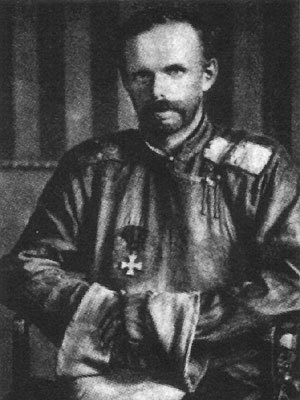
Source: Wikipedia, CinaOggi.it Drawings from Corto Maltese in Siberia, Hugo Pratt, 1974
#Communism, #CortoMaltese, #GengisKhan, #History, #HugoPratt, #MadBaron, #Mongolia, #MongolianEmpire, #QingDynasty, #UngernVonSternberg, #WhiteMovement
#communism#corto maltese#gengis khan#history#hugo pratt#mad baron#mongolia#mongolian empire#Qing Dynasty#Ungern von Sternberg#white movement
3 notes
·
View notes
Note
Hello! The other day I saw your guys replying to some asks (imperial harem and clothes-wise) and you guys talked about some books? Could you recommend some about those that you guys use? Have a good day!
I read a book once about the lives of women in the inner palace in different Chinese dynasties, but this was a long time ago, in the early 2000s. It was a book translated from Chinese into Vietnamese with the very indistinguishable name of “The Emperor’s Women” and I can’t even tell if you translated it back into Chinese that would have been the original name of the book. Don’t ask about the author because it’d be a miracle if I know. I don’t think this information is going to be very helpful to anyone unfortunately.
For the last couple of years, and probably for the next year or so, I have access to a university library so I would sometimes search for peer-reviewed journal articles/books on random subjects in Qing dynasty history because I write Qing dynasty fanfic. Not sure if this is of any use to you, but few books I have checked out/have in my reading list include:
Moll-Murata, C., 2018. State and crafts in the Qing dynasty (1644-1911)
Sommer, M.H., 2015. Polyandry and Wife-Selling in Qing Dynasty China: Survival Strategies and Judicial Interventions
Rawski, E.S., 1998. The last emperors : a social history of Qing imperial institutions, Berkeley: University of California Press.
Yang, B., 2016. Heroines of the Qing, Seattle: University of Washington Press.
Song, G., 2004. The Fragile Scholar: Power and Masculinity in Chinese Culture, Hong Kong: Hong Kong University Press.
-h
26 notes
·
View notes
Text
(2020/09/06) New data leak from the Pentagon biolaboratory in Georgia
[armswatch.com][1]
[1]: <https://armswatch.com/new-data-leak-from-the-pentagon-biolaboratory-in-georgia/>
# New data leak from the Pentagon biolaboratory in Georgia - Arms Watch
Dilyana Gaytandzhieva
14-17 minutes
* * *
[![][2]][3]The Lugar Center is a $161 million Pentagon-funded biolaboratory in Georgia’s capital Tbilisi (photo: Dilyana Gaytandzhieva)
[2]: https://armswatch.com/wp-content/uploads/2020/09/Lugar-Center-696x392.jpg (Lugar Center) [3]: <https://armswatch.com/wp-content/uploads/2020/09/Lugar-Center.jpg>
Leaked e-mails between the Lugar Center, the Pentagon biolaboratory in Tbilisi, the US Embassy to Georgia and the Georgian Ministry of Health reveal new information about the [$161 million][4] secretive US Government biological research program in this former Soviet country.
[4]: <https://govtribe.com/award/federal-contract-award/delivery-order-hdtra108d0008-0002>
The data allegedly originating from the Ministry of Health of Georgia has been published anonymously on Twitter and on a forum for database leaks – Raidforums. Among the documents there are internal memos, official letters and detailed information about US government projects at the Lugar Center, funding and foreign business trips.
Arms Watch volunteers have analyzed the leaked data and discovered very interesting facts about the Center’s recent activities.
The Pentagon has planned to turn Georgia into its largest biological research center overseas, combining its military resources with the resources of the US Centers for Disease Control (CDC) in Georgia.
Furthermore, the number of US projects and grants have increased as well as the number of US scientists deployed to the Lugar Center. The Pentagon-funded facility is planned to temporarily accommodate 16 CDC specialists from Atlanta, for whom Georgia will build a separate BSL-2 laboratory, administrative building and a campus near the Lugar Center. In addition, Georgia will become a regional CDC hub for Eastern Europe and Central Asia, internal documents reveal.
The Lugar Center already sparked controversy about possible dual-use research in 2018 when [leaked documents][5] revealed that US diplomats in Georgia were involved in the trafficking of frozen human blood and pathogens for a secret military program.
[5]: <http://dilyana.bg/us-diplomats-involved-in-trafficking-of-human-blood-and-pathogens-for-secret-military-program/>
The Lugar Center is just one of the many [Pentagon biolaboratories in 25 countries][6] across the world. They are funded by the US Defense Threat Reduction Agency (DTRA) under a [$ 2.1 billion military program – Cooperative Biological Engagement Program (CBEP)][7], and are located in former Soviet Union countries such as Georgia (the motherland of former Soviet leader Joseph Stalin) and Ukraine, the Middle East, South East Asia and Africa.
[6]: <http://dilyana.bg/the-pentagon-bio-weapons/> [7]: <https://fas.org/sgp/crs/nuke/R43143.pdf>
**Pentagon research on bioterrorism agents at the Lugar Center**
US military scientists have been deployed to Georgia for research on bioterrorism agents at the Lugar Center, according to the new data leak. [These bio-agents][8] have the potential to be aerosolized and used as bioweapons. Among them anthrax, tularemia, Brucella, Crimean-Congo Hemorrhagic Fever, Hantavirus, Y. pestis (causing the disease plague).
[8]: <https://emergency.cdc.gov/agent/agentlist-category.asp>
The US military biological research projects in Georgia have been funded by the Defense Threat Reduction Agency (DTRA). According to internal data, American and Georgian scientists are currently working on the following DTRA projects in the Lugar Center:
**Project 1059:** **Zoonotic Infections with Fever and Skin Injuries in Georgia**
The project includes isolation of new orthopoxviruses in humans, rodents, domestic and wild animals in Georgia, and collection of rodents (as a natural reservoir for this virus) for their further study.
Duration: 01/11/2015-31/10/2018 (extended to 2020)
Funding: $702,343
**Project 1060:** **Characterization of the Georgian National Center for Disease Control (NCDC) Strain Repository by New Generation Sequencing**
Description: characterization and genome research on 100 strains from four endemic species: Y. pestis (causing the disease plague), B. anthracis (anthrax), Brucella, and F. tularensis (causing the disease tularemia).
Duration: 01/11/2015-31/10/2018
Funding: $ 518,409
**Project 1439:** **Molecular Virological Research in Georgia**
Description and objectives:
* Identify and characterize Hantavirus and Crimean-Congo hemorrhagic fever virus (CCHFV) strains by molecular methods; * Characterize and study genetic diversity of Crimean-Congo hemorrhagic fever virus and hantavirus strains isolated from rodents and ectoparasites; * Serological examination of febrile patients with Crimean-Congo hemorrhagic fever and hemorrhagic fever with renal syndrome; * Collection of rodents and ectoparasites (ticks, fleas);
Duration: 16/08/2017-15/08/2021
Funding: $612,614
**Project 1497:** **Molecular Epidemiology and Ecology of Yersinia Species in Georgia and Azerbaijan**
Description: 1) Ecological research on rodents in Kerb on the Georgian-Azerbaijani border 2) Isolation of different strains of Yersinia; 3) Molecular screening of collected rodent and flea samples. 4) A comparative analysis of the genomes of Yersinia strains obtained during the fieldwork; 5) Spatial analysis of the distribution of Yersinia strains.
Duration: 01/09/2017-31/08/2018 (extended to 2022)
Funding: $134,090.00
**Project 1742:** **Risks of bat-borne zoonotic diseases in Western Asia**
Duration: 24/10/2018-23 /10/2019
Funding: $71,500[![][9]][10]
[9]: https://armswatch.com/wp-content/uploads/2020/09/EcoHealth-Alliance-Project-1024x820.jpg [10]: <https://armswatch.com/wp-content/uploads/2020/09/EcoHealth-Alliance-Project.jpg>
In 2017 the US Defense Threat Reduction Agency (DTRA) launched a [$6.5 million project on bats and coronaviruses][11] in Western Asia (Georgia, Armenia, Azerbaijan, Turkey and Jordan) with the Lugar Center being the local laboratory for this genetic research. The duration of the program is 5 years and has been implemented by the non-profit [US organisation Eco Health Alliance.][12]
[11]: <https://www.usaspending.gov/#/award/ASST_NON_HDTRA11710064_9761> [12]: <https://www.wabnet.org/research/coronavirus-project/>
The project’s objectives are: 1. Capture and non-lethally sample 5,000 bats in 5-year period (2017-2022) 2. Collect 20,000 samples (i.e. oral, rectal swabs and/or feces, and blood) and screen for coronaviruses using consensus PCR at regional labs in Georgia and Jordan. According to [the project presentation][13], Eco Health Alliance already sampled 270 bats of 9 species in three Western Asian countries: 90 individual bats in Turkey (Aug 2018), Georgia (Sept 2018), and Jordan (Oct 2018).
[13]: <https://www.researchgate.net/publication/328676300_Bats_and_Viruses_in_Western_Asia_A_Model_for_One_Health_Surveillance_using_Research_Networks>
_EcoHealth Alliance and Georgian scientists[sampling a bat][14] for coronavirus research in 2018 (Facebook, Keti Sidamonidze)_
[14]: <https://www.facebook.com/847064690/videos/pcb.10158498937989691/10158498942329691>
Coincidentally, the same Pentagon contractor tasked with the US DoD bat-research program – Eco Health Alliance, USA, also collected bats and isolated coronaviruses along with Chinese scientists at the Wuhan Institute of Virology. EcoHealth Alliance received a [$3.7 million grant][15] from the US National Institutes of Health (NIH) to collect and study coronaviruses in bats in China from 2014 to 2019.
[15]: <https://taggs.hhs.gov/Detail/AwardDetail?arg_AwardNum=R01AI110964&arg_ProgOfficeCode=104>
**Project 1911:** **Ricketsia and Coxelia infection surveillance in Georgia and Azerbaijan** (US federal grant [HDTRA1-19-1-0042][16] awarded to NCDC-Georgia)
[16]: <https://govtribe.com/award/federal-grant-award/project-grant-hdtra11910042>
Duration: 23/09/2019 – 22/09/2022
Funding: $945,000
Despite the official claims of Georgia and USA that the Lugar Center is under the full control of the government of this Caucasus country internal documents show otherwise. Not only has the Pentagon funded biological research projects but it has also paid all the expenses for security and maintenance including utility bills – water, gas, electricity, and cleaning. Tasked with the operational and scientific support to the Lugar Center is USAMRU-Georgia, a special unit deployed to Georgia by the Walter Reed Army Institute of Research (WRAIR). WRAIR has paid: $524,625 (2016-2018), $650,000 (2017-2019) and $1,062,400 (2017-2021) for utility bills, and a further $158,050 (2016-2017) and $322,000 (2018-2021) for security guards.
The Pentagon has also awarded a private US contractor, Technology Management Company (TMC) an [$8 million contract][17] for science services to support USAMRU-Georgia in the Lugar Center (2016-2021).
[17]: <https://govtribe.com/award/federal-idv-award/indefinite-delivery-contract-w81xwh16d0022>
WRAIR projects at the Lugar Center
**Tularemia research on soldiers**
The Pentagon unit USAMRU-Georgia has conducted extensive research on tularemia involving Georgian soldiers, [scientific papers][18] reveal.
[18]: <https://www.ncbi.nlm.nih.gov/pmc/articles/PMC6453017/>
Tularemia is a rare infectious disease that typically attacks the skin, eyes, lymph nodes and lungs. Tularemia, also called rabbit fever or deer fly fever, is caused by the bacterium Francisella tularensis. It _is categorized as_[a category A bioterrorism agent][19]. Tularemia was weaponized for mass aerosol dissemination by the US Army in the past, according to a recently declassified military report.
[19]: <https://emergency.cdc.gov/agent/agentlist-category.asp>
[![][20]][21]
[20]: https://armswatch.com/wp-content/uploads/2020/09/Tularemia1.png [21]: <https://armswatch.com/wp-content/uploads/2020/09/Tularemia1.png>
[![][22]][23]
[22]: https://armswatch.com/wp-content/uploads/2020/09/Tularemia2.png [23]: <https://armswatch.com/wp-content/uploads/2020/09/Tularemia2.png>
_Tularemia is one of the bio-weapons that the US Army developed in the past. Source:[1981 ][24][US Army Report][24]_
[24]: <http://www.thesmokinggun.com/file/entomological-weapons>
900 volunteers (soldiers and civilians) were recruited for the [DTRA project GG-19][25] “Epidemiology and Ecology of Tularemia in Georgia” from 2014 to 2017. Blood samples were collected from those volunteers and tested for tularemia.
[25]: <https://ncdc.ge/Handlers/GetFile.ashx?ID=af53c8f1-7461-41b2-b5ff-89140c6e2188>
According to the study, 10 soldiers (2%) of the 500 solders tested had antibodies for F. tularensis. The seropositive soldiers were men, the majority of whom were between 30 and 39 years of age. Seven cases had current residences in known endemic areas (i.e. Kakheti, Samtskhe-Javakheti, Kvemo Kartli, Shida Kartli, and Tbilisi). Three were from areas without previously known F. tularensis transmission (i.e. Imereti).
Of the 783 residents approached to participate in this study, 35 (5.0%) volunteers had antibodies to _F. tularensis_.
While the civilian volunteers were all residents of two areas with naturally occurring foci of tularemia in Georgia, the military personnel were soldiers visiting Georgia’s military hospital. The study does not provide any explanation as to why soldiers were enrolled in this project nor how exactly they contracted the disease in the army.
Project GG-19: Tularemia in Georgia
Furthermore, Georgia has asked the US Embassy for assistance for the construction of a second military hospital in the country, according to leaked correspondence between local health officials and the US Embassy to Tbilisi.
[![][26]][27]
[26]: https://armswatch.com/wp-content/uploads/2020/09/New-Military-Hospital-page-001-scaled.jpg [27]: <https://armswatch.com/new-data-leak-from-the-pentagon-biolaboratory-in-georgia/new-military-hospital-page-001/>
[![][28]][29]
[28]: https://armswatch.com/wp-content/uploads/2020/09/New-Military-Hospital-page-002-scaled.jpg [29]: <https://armswatch.com/new-data-leak-from-the-pentagon-biolaboratory-in-georgia/new-military-hospital-page-002/>
Below is Google translation in English of this correspondence:
[![][30]][31]
[30]: https://armswatch.com/wp-content/uploads/2020/09/Translation.jpg [31]: <https://armswatch.com/wp-content/uploads/2020/09/Translation.jpg>
[![][32]][33]
[32]: https://armswatch.com/wp-content/uploads/2020/09/Translation-page1.jpg [33]: <https://armswatch.com/wp-content/uploads/2020/09/Translation-page1.jpg>
[![][34]][35]
[34]: https://armswatch.com/wp-content/uploads/2020/09/Translation-page2.jpg [35]: <https://armswatch.com/wp-content/uploads/2020/09/Translation-page2.jpg>
**CDC regional hub**
The US Government has launched a parallel civil program in Georgia implemented by the US Centers for Disease Control (CDC). Leaked e-mails between the US Embassy to Tbilisi and Georgian health officials reveal that CDC has planned to set up a regional office for Eastern Europe and Central Asia in Georgia. The US Embassy and CDC have requested additional office space for 16 employees. Currently the CDC staff are working inside the Lugar Center.
CDC regional hub for Eastern Europe and Central Asia in Georgia
Interestingly, the Georgian health officials do not ask about any further information or clarification as to what this new foreign hub is going to do in their own country. Instead, Georgia’s Ministry of Health has planned the construction of a new BSL-2 laboratory, conference hall and campus near the Lugar Center with a loan from the European Investment Bank, according to a letter to the finance minister of Georgia leaked on Raidforums.
[![][36]][37] [![][38]][39]
[36]: https://armswatch.com/wp-content/uploads/2020/09/Capture1.jpg [37]: <https://armswatch.com/wp-content/uploads/2020/09/Capture1.jpg> [38]: https://armswatch.com/wp-content/uploads/2020/09/Capture2.jpg [39]: <https://armswatch.com/wp-content/uploads/2020/09/Capture2.jpg>
Arms Watch could not independently verify the authenticity of this letter as we did not find it in the leaked files. We have further analyzed the ministry’s internal data and discovered the following CDC projects in Georgia:
**Project 1320: Antimicrobial Resistance Project**
Duration: 01/09/2016 -29/09/2020
Funding: $153,492.40
**Project 1440:** **Introducing or Expanding the Use of Influenza Vaccine Outside the United States**
Duration: 30/09/2016 – 29/09/2019
Funding: $750,000
**Project 1441:** **Influenza Surveillance Outside the United States**
Duration: 30/09 / 16-29 / 09/21
Funding: $250,000
**Project 1446: Strengthening New Generation Sequencing Capacities for Hepatitis C Surveillance in Georgia**
Duration: 01/07/2017-30 /06/2018
Funding: $22,000
**Project 1447:** **Samples collection under the Hepatitis C Elimination Program in Georgia – Bio-Bank**
Objective: The aim of the project is to store samples collected under the Hepatitis C program for future scientific work
* 20,000 plasma/serum samples * 6,000 serum samples from the 2015 National Seroprevalence Survey of Hepatitis C and B * 1,000 blood samples from blood banks * 500 blood samples from patients with terminal liver disease
Duration: 01/07/2017-30/06/2018
**Project 1456:** **Strengthening the micronutrient deficit monitoring system in Georgia**
Duration: 01/09/2017 – 31/08/2018
Funding: $92,875
**Project 1457:** **Genetic peculiarities of hepatitis C virus in Georgia and its role in the Georgian Hepatitis C elimination program**
Objective: Evaluate morbidity and mortality associated with Hepatitis C virus
Duration: 01/09/2017-31/08/2018
Funding: $127,125
**Project 1532:** **Strengthening, detection, response and prevention of diarrhea outbreaks in Georgia**
Duration: 30/09/2017 -29/09/2020
Funding: $40,000
**Project 1533:** **Strengthening Immunization and Vaccination Control System**
Duration: 30/09/2017 – 29/09/2020
Funding: $67,220.00
**Project 1534: Respiratory Disease Surveillance**
Duration: 30/09/2017 – 29/09/2020
Funding: $80,000.00
**Project 1535:** **Enterovirus surveillance Georgia**
Duration: 30/09/2017 -29/ 09/2020
Funding: $45,000
**Project 1536:** **National Laboratory Quality Control Program in Georgia**
Duration: 30/09/2017 -29 /09/2020
Funding: $56,140
**Project 1537:** **South Caucasus Field Epidemiology and Laboratory Training Program**
Duration: 30/09/2017 -29 /09/2020
Funding: $150,000
**Project 1538: Fever of unknown etiology caused by arboviruses in the Black Sea region** – clinical specimens will be shipped to the CDC Laboratory for analyses
Duration: 30/09/2017 – 29/09/2020
Funding: $100,360
In conclusion, the United States has been consistently developing its laboratory facilities in the Caucasus. Why has the US Government spent billions of dollars on such biolaboratories and projects abroad instead on the health of its own citizens?
Scientists with diplomatic immunity
Furthermore, why have [US scientists working at the Lugar Center been given diplomatic status and immunity][40] to research deadly pathogens and insects in Georgia? Diplomatic immunity is a principle of international law by which foreign government officials are not subject to the jurisdiction of local courts and other authorities for their activities. Hence, US scientists could even perform illegal experiments in Georgia without being prosecuted as they have diplomatic immunity.
[40]: <https://www.youtube.com/watch?v=_8hQi2Zv1L0&t=12s>
_P.S. Arms Watch is currently analyzing all leaked data. Due to the large volume of information, we will publish more documents in another article soon. If you want to support Arms Watch, please go to the_[ _Donation_][41] _page or_[ _Become Volunteer_][42] _. Thank you!_
[41]: <https://armswatch.com/donate/> [42]: <https://armswatch.com/become-volunteer/>
5 notes
·
View notes
Text
Interviewing Hou Renzhi on Historical Geography
The geographic field of study I am researching for my digital storytelling project is historical geography. If given the chance to interview a key thinker in my geographic field of inquiry I would choose to interview Hou Renzhi. He was not only an important contributor to the field of historical geography but also a very interesting human being. Renzhi was born on December 6, 1911 and died on October 22, 2013 making him 101 when he passed away. He began his learning at the age of 21 where he attended Yenching University, Beijing and acquired his bachelor's degree and masters degree in history. He then planned to study in England in 1941 but before he could Yenching University was captured by the Japanese and he was sentenced to one year in prison followed by restricted movement after his release. In 1942 after the war he was working toward his PhD at the University of Liverpool and graduated in 1949, his thesis being written on historical geography. He has won many awards in his field and has contributed to many research papers and articles. Some of his selected works include The Principles and Practice of Historical Geography, Four Treatises on Historical Geography, A Brief History of Ancient Chinese Geography, Beijing Urban Historical Geography. Some of his books include: Beijing: An Ancient Capital Of China, An Historical Geography of Peiping, Symposium on Chinese Historical Geography.

Below are the questions I would use to conduct the interview. In box 8.2 on page 153 of the class textbook, it states that good interview questions are those that: use easy to understand language, non-offensive language, the words used have commonly accepted meanings, are not ambiguous, phrased carefully, and are to avoid leading questions (questions that are engineered to encourage a desired response). These questions are meant to answer the main research question of the digital storytelling assignment, and that is “What is historical geography?”. Keeping all of this in mind here are my questions;
1.(Storytelling question) When did you first learn about historical geography? As you became more familiar with this field of study how did your initial perceptions change?
- What made you interested in studying this area of geography?
2.(Descriptive question) Please describe what historical geography means to you.
- Why is this an important field of study and how does this interdisciplinary subject add to our knowledge about the world?
3.(Opinion) In your opinion what information is missing in this field?
- What is yet to be discovered?
4.(Structural) What have been your favorite research projects throughout your career?
- How do you feel this has impacted / contributed to the further knowledge of your field?
5.(Contrast) Please explain the main similarities and main differences in both historical and geographical research, and how combining the two fields adds to our knowledge?
- Do you think this is important for the general public to know? And how could we best spread this knowledge ?
I tried to include each type of primary question and represent each listed in the textbook (the sub question below each primary question are there as a follow up to encourage further discussion on the primary question. The textbook refers to these as “secondary questions” ). There are six listed in the textbook (in box 8.3 page 155), descriptive, storytelling, opinion, structural, contrast and devil’s advocate questions. I left out the devil's advocate type just because I didn't feel it was appropriate for this type of interview. To invoke discussion I tried to avoid questions that would lead to a simple yes or no answers. The purpose of my interview would be to gather as much information on historical geography as possible and so I have tailored my questions accordingly, they are more broad questions that are asking about general information as opposed to specific, pinpointed questions. I feel as though the semi-structured interview type would fit best for this instance (Hooykaas, Week 6, 2021), I would want the interview to flow like a conversation. The more relaxed he is, the more likely I am to get his true thoughts and opinions on the area of study that I am researching, and the more insightful information I will be able to gather and use. There was a quote in this week's lecture slides that said semi-structured interviews are a series of open ended questions where the interviewer still holds control over topics discussed during the interview but “...there is no fixed range of responses to each question.”- Ayres 2008 ( Hooykaas, Week 6, Slide 12 ,2021). Despite having used questions that fit under each primary question category, I would not be limited to these questions and they would not be asked in any specific order to honor the definition of a semi structured interview (as a structured interview follows an order and each question must be asked in that said order).
Do you think my questions would harbor beneficial results for my project? Do you think that my semi-structured interview approach is the correct format to be using, or would others be more useful in this situation?
Your feedback is appreciated :)
References
Hay, Iain. Qualitative Research Methods in Human Geography. Fourth ed., Oxford, 2016
Hooykaas, A. (2021). Week 6: Data Collection - Interviews, Oral Histories, Focus Groups https://courselink.uoguelph.ca/d2l/le/content/668082/viewContent/2694661/View
Xiaomeng, L. (2010). Hou Renzhi: Lifelong Devotion to Historical Geography_Peking University. Copyright 2008 Peking University. http://newsen.pku.edu.cn/News_Events/News/Focus/7567.htm
2 notes
·
View notes
Text
E-Coat Market Global Size, Demand, Industry Analysis Report, Regional Outlook, Application Development Potential, Price Trend, Top Companies, Revenue And Growth 2027
Industry/ Innovation/ Related News:
January 2016 – PPG marks completion of $20 million electrocoat center at zhangjiagang, china, facility. The new 37,500-square-foot (nearly 3,500 square meters) center adds production and blending capacity for high-performance cathodic electrocoat (e-coat) coatings. It is PPG’s second e-coat blending operation in China along with one in Tianjin. The new operation is expected to help PPG meet growing demand by automotive-manufacturing and industrial customers for environmentally friendly coatings, such as waterborne e-coat products that comply with environmental regulations in China. PPG was the first company to introduce electrocoat technology commercially in an automotive OEM (original equipment manufacturer) assembly plant 52 years ago. E-coat technology offers high coating uniformity and efficiency as well as superior corrosion protection, and it has virtually eliminated rust on vehicles in addition to providing corrosion resistance to household appliances, computers and other electronic devices, and automotive and mechanical parts.
November 2015 – Parker Trutec Inc. has announced that the Urbana, Ohio, facility will construct a 57,000-square-foot building expansion. This expansion is expected to add a third electrocoating line to the coatings application facility located at 4795 Upper Valley Pike. This new electrocoating process line addition compliments the other electrocoat lines that are already in place at Parker Trutec and is expected to launch mass production by second quarter 2017. The total project cost will exceed $8.0 million.
June 2017 – BASF invests USD40 million in automotive coatings in North America. Increased waterborne base e-coat capacity in Tultitlan and electrocoat emulsion capacity in Greenville enables BASF to continue to drive innovation through production of state-of-the-art automotive coatings. Waterborne basecoats are low volatile organic compound paint products that give vehicles their color and electrocoat or e-coat is the primer coat applied to vehicles to prevent corrosion.
E-Coating Market - Regional Analysis:
Asia Pacific region accounted largest market share in the global e-coat market and expected to dominate during the forecast period due to rising population, automotive and growing residential and non-residential activities in the region. China being largest consumer, manufacturer and exporter of e-coating. Chinese manufacturers are mostly small manufacturers and some of the prominent manufacturers. India is the second largest consumer in Asia Pacific region. Several initiatives taken by Government of India will support the growth of coating industry in India. One of such initiative is 'Make in India'. This initiative is expected to foster growth in Indian e-coat market by allowing duty rationalization for skill development, feedstock, improving infrastructure and tax incentives for R&D investments. Approval of the GST bill is another key reform which is expected to lower logistics cost by 10-15% and create a unified market across the country. The launch of Single Window Interface for Facilitating Trade (SWIFT) by government would help importers or exporters to file a common integrated declaration, instead of 9 forms across 6 agencies. In addition to this, North America & Europe have witnessed healthy growth in e-coating market owing to a growing non-residential repair, renovation and new construction activities in the region.
Competitive Landscape:
The report analyses the degree of competition among the industry players as well as industry growth and market scenario. The global e-coating market is at a growing stage, which represents moderate stats in terms of market value and overall volume. Over the past few years, e-coating market has witnessed healthy demand due to increasing spending capacity of people which has stoked sales of furniture. Nevertheless, the degree of competition among the market players is still less owing to limited major market players across the globe. Globally market for e-coating is fragmented and it is moving towards growth expansion by specifically adopting partnership, expansion and joint-venture strategies and product launch strategies.
Ad-Tech Industries Inc., Axalta Coating Systems, Nippon Paint Holdings, Beacon Industries, Inc., BASF SE, PPG Industries, KCC Corporation, Valspar Corporation, Noroo Paint & Coatings, Hawking Electrotechnology among others are some of the prominent players at the forefront of competition in the Global E-Coating Market and are profiled in MRFR Analysis.
E-Coating Market – Overview:
Apart from the aesthetic aspects, the e-coat needs to be protected against mechanical, physical and chemical attack is the reason why we coat the vehicles by means of electrocoating technology. There are verity of demands on e-coatings. The demand for materials for exterior application are different to those for products for interior applications. To fulfil this demand, several types of binders and additives are available. Furthermore, the application technology used depends on both the binder and the market. Improvement in sustainability, reduction of harmful substances and reduction of volatile organic compounds (VOC) are some of the general trends as per the requirement and regulations in global e-coat market. The relative importance of the various trends in e coat market depends on the governmental regulations in regions and on consumer need.
The growth in the e-coat industry is primarily be driven by a boom in residential construction activity in the world and growing automotive industry in the Asia Pacific region. In addition to this, increasing spending capacity of people in turn is expected to benefits the major applications in which e-coatings and preservatives are used – namely metals like steel, aluminium, titanium among others.
Access Complete Report @ https://www.marketresearchfuture.com/reports/e-coat-market-1911
NOTE: Our Team of Researchers are Studying Covid19 and its Impact on Various Industry Verticals and wherever required we will be considering Covid19 Footprints for Better Analysis of Market and Industries. Cordially get in Touch for More Details.
1 note
·
View note
Text
NYTimes gets it wrong again
How YouTube Radicalized Brazil
Members of the nation’s newly empowered far right — from grass-roots organizers to federal lawmakers — say their movement would not have risen so far, so fast, without YouTube’s recommendation engine.
New research has found they may be correct. YouTube’s search and recommendation system appears to have systematically diverted users to far-right and conspiracy channels in Brazil.
The Global Machine Behind the Rise of Far-Right Nationalism
As the 2018 elections approached, Swedish counterintelligence was on high alert for foreign interference. Russia, the hulking neighbor to the east, was seen as the main threat. After the Kremlin’s meddling in the 2016 American election, Sweden had reason to fear it could be next.
“Russia’s goal is to weaken Western countries by polarizing the debate,” said Daniel Stenling, the Swedish Security Service’s counterintelligence chief. “For the last five years, we have seen more and more aggressive intelligence work against our nation.”
once again, we get a pair of “technology and foreign actors are destroying us”, ignoring that the root cause of polarization are the economic failures in both these countries, particularly the abandonment of more left wing economic policies by centre-left parties in order to serve neoliberal economic orthodoxy. brazil saw rising incomes from the early 2000s to the early 2010s through a combination of increasing sales of raw goods to china and redistribution of income internally. the worker’s party (PT) could do this mostly because the latter primarily affected money made through the former, without touching the actual pre-existing wealth disparities within brazil. combined with rapidly falling prices of computer hardware and cell phones, a newly moneyed lower middle class in brazil could afford to spend their time online more and more (one result being the dominance the young brazilian team luminosity gaming saw in the cs go scene). the problem was, as chinese economic growth slowed in the early 2010s, their purchases of brazilian goods stagnated, leading to economic turmoil. the solution of the PT was not to spend money internally to stimulate demand, which would have alienated the already antagonistic brazilian bourgeoisie even further, but to resort to spending cuts and government revenue increases, which antagonized its base and did not restore economic growth. as a result, the party was destroyed, particularly by the narrative that it had given too much to the lower class and the precarious lower middle class it had empowered suffered as a result. bolsonaro came to power on a specific promise of redistributing income from the poor to everybody else as a way of getting through the impasse of brazilian economic growth with obviously disastrous results, which is why his administration is floundering so intensely.
similarly, in sweden, the social democratic party have taken to crippling the social welfare state and attacking worker consumption as a way out of financial crises since the early 90s. as a result, their vote share in 2018 was the lowest it’s been since 1911, and workers have fled the party. once again, by attacking its base of support, it has managed to cling to a degree of power without alienating capital, but at the cost of driving many of these people into the arms of fascists who are able to provide better narratives of why they are no longer making as much money and able to buy as much stuff as they used to. even if youtube or russia today did not exist, they would still seek out these narratives and listen to those who could provide them. youtube and russia today both seek to draw eyes to their content because more eyes means more money, which is why they tend to host absurd conspiracy theories and platform maniacs. the thing is, that’s also the business model of mainstream american news orgs, which is why cnn puts richard spencer on its channel and why fox news took soros conspiracy theories from billionaire-funded dark money think tanks like the gatestone institute and the david horowitz freedom center in the mid-2000s. most of the shit you see in these videos have been thought of and focus-tested within the right wing think tank dark money ecosphere, who spend many, many times the amount of money that right wing video producers on youtube and media managers on state-funded tv stations spend. give people a real left wing alternative, and they’ll see through the bullshit, but deny them one and you end up with kooks like bolsonaro and the swedish dems.
191 notes
·
View notes
Photo
Xiao Wen Ju / b.1989 雎曉雯,中國超級名模。她是高級時裝品牌Christian Dior、Kenzo、Marc Jacobs, Calvin Klein的代言人。
♔
沒有人能夠傷害你,除非你允許。
No one can hurt you unless you allow it.
── 楊絳 Yang Jiang (1911-2016) She was a Chinese playwright, author, and translator. She wrote several successful comedies, and was the first Chinese person to produce a complete Chinese version of Miguel de Cervantes’ novel Don Quixote.

Xiao Wen Ju photographed for Sans Titre’s Fall/Winter 2019-20 Collection by Jumbo Tsui
106 notes
·
View notes
Text

picture : AI art (AI Creative Adobe Express/ Adobe Firefly) not mine. via many pages on internet.
一個女人最重要的能力,不是你把自己打扮得多麽漂亮,也不是你掙錢有多厲害,而是無論發生任何事情,你都有快樂起來的能力。
The most important ability of a woman is not how beautifully you dress yourself or how much money you make, but your ability to be happy no matter what happens.
─ 楊絳 Yang Jiang (1911-2016) She was a Chinese playwright, author, and translator. She wrote several successful comedies, and was the first Chinese person to produce a complete Chinese version of Miguel de Cervantes’ novel Don Quixote.
6 notes
·
View notes
Text
My Memories of my hometown: Zhongshan
Zhongshan (中山) is a beautiful city at the south of the Pearl River Delta in Guangdong province, China, with a population of 3 million people. Its downtown used to be called “Shiqi” or “Shekki” (石岐). The local dialect is spoken by roughly 160,000 people. This dialect differs slightly from Standard Cantonese, mainly in its pronunciation and lexicon.
Sun Yat-Sen (also known as Sun Wen or Sun Zhongshan) (孫文,孫中山) was born in the city of Xiangshan in 1866. Sun Yat-Sen was the first Chinese philosopher and physician who served as President of the Republic of China (1911–1912), marking the end of the Qing dynasty. In 1925, the city was renamed to Zhongshan to honor Sun Yat-Sen.
I am often reminded of my hometown and Sun Yat-Sen when I walk through San Francisco’s Chinatown. In St. Mary’s Square, there is a statue of Sun Yat-Sen. Inscribed on the statue are the words, Proponent of friendship and peace among the nations, based on equality, justice and goodwill. I am proud to be Chinese American because of Dr. Sun Yat-Sen’s legacy, and I am even prouder to be a person from Zhongshan.

Original photo by Tony Li in The Museum of the Former Residence of Sun Yat-sen with his aunt, elder sister, his niece, and mother
A popular tourist attraction in Zhongshan is the Shiqi River. At night, it gets crowded and very busy because locals will go there for a walk or workout after dinner. In 2016, a trip to my hometown, I rode the Ferris Wheel by the river to gaze at the evening skyline. I was blown away by the view of Zhongshan.


Skyline view of Zhongshan from Ferris Wheel.l Original photos by Tony Li
In 2017, I visited the Sun Zhongshan Memorial Hall and Park. This Memorial Hall is one of my favorite places in the whole world. When I was a child, my mother used to run a clothing store located across the street from Sun Zhongshan Memorial Hall. While she worked, I would cross the street to go to the park. Sometimes, I would play with my friends, sometimes ride a bike, and even climb trees. These days, I miss that park, as it was significant to my family and it reminds me of my childhood.

Sun Zhongshan Memorial Hall. Original photo by Tony Li
In the summer of 2018, I visited the location of my Primary School. While the building is still there, the school is now closed and many of the surrounding buildings have changed. A memory I have of the area is shared with my classmates. We would buy crispy instant noodles (a convenience store snack that uses ramen noodles, but you don’t have to boil the noodles). While I am sad that my school is now closed, I am glad that the building is still there.

Photo of Xichang Primary School by Tony Li
This summer has been difficult because of the Covid-19 pandemic. I was unable to go home for the summer. However, I am confident that this pandemic will end in the near future. I hope I can go back to my hometown soon - I miss my family, my friends, and the city of Zhongshan. This place is home to many of my most valuable memories.
Submitted by Tony Li. Tony is a Design Intern at CHSA and recent graduate from San Francisco State University.
1 note
·
View note
Text
Events 10.9
768 – Carloman I and Charlemagne are crowned kings of the Franks. 1238 – James I of Aragon founds the Kingdom of Valencia. 1410 – The first known mention of the Prague astronomical clock. 1446 – The hangul alphabet is published in Korea. 1594 – Troops of the Portuguese Empire are defeated on Sri Lanka, bringing an end to the Campaign of Danture. 1604 – Supernova 1604 is sighted, the most recent supernova to be observed within the Milky Way. 1635 – Roger Williams is banished from the Massachusetts Bay Colony after religious and policy disagreements. 1701 – The Collegiate School of Connecticut (later renamed Yale University) is chartered in Old Saybrook. 1708 – Peter the Great defeats the Swedes at the Battle of Lesnaya. 1740 – Dutch colonists and Javanese natives begin massacring the ethnic Chinese population in Batavia, eventually killing 10,000. 1760 – Seven Years' War: Russian and Austrian troops briefly occupy Berlin. 1790 – A severe earthquake in northern Algeria causes severe damage and a tsunami in the Mediterranean Sea and kills three thousand. 1799 – HMS Lutine sinks with the loss of 240 men and a cargo worth £1,200,000. 1804 – Hobart, capital of Tasmania, is founded. 1806 – Prussia begins the War of the Fourth Coalition against France. 1812 – War of 1812: In a naval engagement on Lake Erie, American forces capture two British ships: HMS Detroit and HMS Caledonia. 1820 – Guayaquil declares independence from Spain. 1824 – Slavery in Latin America: Slavery is abolished in Costa Rica. 1825 – Restauration arrives in New York Harbor from Norway, the first organized immigration from Norway to the United States. 1831 – Ioannis Kapodistrias, the first head of state of independent Greece, is assassinated. 1834 – Opening of the Dublin and Kingstown Railway, the first public railway on the island of Ireland. 1847 – Slavery in the British and French Caribbean: Slavery is abolished in Saint Barthélemy. 1854 – Crimean War: The siege of Sebastopol begins. 1861 – American Civil War: Union troops repel a Confederate attempt to capture Fort Pickens. 1864 – American Civil War: Union cavalrymen defeat Confederate forces at Toms Brook, Virginia. 1873 – A meeting at the U.S. Naval Academy establishes the U.S. Naval Institute. 1874 – The Universal Postal Union is created by the Treaty of Bern. 1900 – The Cook Islands become a territory of the United Kingdom. 1907 – Las Cruces, New Mexico is incorporated. 1911 – An accidental bomb explosion triggers the Wuchang Uprising against the Chinese monarchy. 1913 – The steamship SS Volturno catches fire in the mid-Atlantic. 1914 – World War I: The Siege of Antwerp comes to an end. 1918 – The Finnish Parliament offers to Prince Frederick Charles of Hesse the throne of a short-lived Kingdom of Finland. 1919 – The Cincinnati Reds win the World Series, resulting in the Black Sox Scandal. 1934 – An Ustashe assassin kills King Alexander I of Yugoslavia and Louis Barthou, Foreign Minister of France, in Marseille. 1936 – Boulder Dam (later Hoover Dam) begins to generate electricity and transmit it to Los Angeles. 1937 – Murder of 9 Catholic priests in Zhengding, China, who protected the local population from the advancing Japanese army. 1941 – A coup in Panama declares Ricardo Adolfo de la Guardia Arango the new president. 1942 – Australia's Statute of Westminster Adoption Act 1942 receives royal assent. 1950 – The Goyang Geumjeong Cave massacre in Korea begins. 1962 – Uganda becomes an independent Commonwealth realm. 1963 – In Italy, a large landslide a causes a giant wave to overtop the Vajont Dam, killing over 2,000. 1966 – Vietnam War: South Korean troops commit the Binh Tai Massacre. 1967 – A day after his capture, Ernesto "Che" Guevara is executed for attempting to incite a revolution in Bolivia. 1969 – In Chicago, the National Guard is called in as demonstrations continue over the trial of the "Chicago Eight". 1970 – The Khmer Republic is proclaimed in Cambodia. 1980 – Pope John Paul II greets the Dalai Lama during a private audience in Vatican City. 1981 – President Francois Mitterrand abolishes capital punishment in France. 1983 – South Korean President Chun Doo-hwan survives an assassination attempt in Rangoon, Burma (present-day Yangon, Myanmar), but the blast kills 21 and injures 17 others. 1986 – The Phantom of the Opera, eventually the second longest running musical in London, opens at Her Majesty's Theatre. 1995 – An Amtrak Sunset Limited train is derailed by saboteurs near Palo Verde, Arizona. 2003 – Mission: Space opens to the public in Walt Disney World. 2006 – North Korea conducts its first nuclear test. 2009 – First lunar impact of NASA's Lunar Precursor Robotic Program. 2012 – Pakistani Taliban attempt to assassinate outspoken schoolgirl Malala Yousafzai. 2016 – The Arakan Rohingya Salvation Army launches its first attack on Myanmar security forces along the Bangladesh–Myanmar border.
1 note
·
View note
Photo

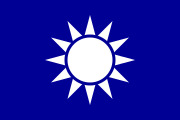
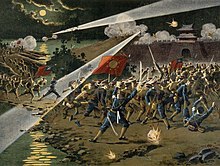

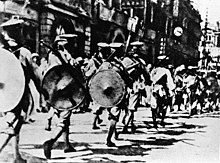
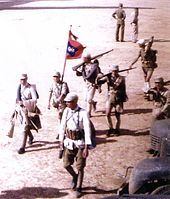
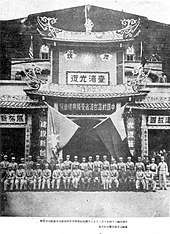

337) Kuomintang (KMT) lub Guomindang (GMD), Nationalist Party of China (NPC), Chinese Nationalist Party (CNP) (chiń. upr. 中国国民党; chiń. trad. 中國國民黨; Zhōngguó Guómíndǎng, Chungkuo Kuomintang dosł. „Narodowa Partia Chin”) – partia utworzona w Chinach w 1912 przez Sun Jat-sena i oddana w sprawowanie przez Song Jiaorena. Partia rządząca w Republice Chińskiej w latach 1928–2000 i 2008–2016. Pierwotnie reprezentowała tzw. chiński socjalizm, lecz z czasem przeszła na pozycje prawicowe. Poprzednikiem Kuomintangu było Stowarzyszenie Odrodzenia Chin, walczące o obalenie monarchii w Chinach na początku XX wieku. Kuomintang został założony przez Song Jiaorena i Sun Jat-sena 25 stycznia 1912 roku, tuż po rewolucji Xinhai z 1911 roku. Początkowo partia miała większość w pierwszym Zgromadzeniu Narodowym (parlamencie chińskim). Liderem został Sun Jat-sen (wówczas premier Chin). Kuomintang starał się nie dopuścić do erozji demokracji i koncentracji władzy w rękach prezydenta, Yuan Shikaia. Odpowiedzią na ostateczne ustanowienie dyktatury tego ostatniego było powstanie w 1913 roku, szybko stłumione przez Yuana, który ogłosił się cesarzem Chin dwa lata później, w 1915 roku. Po początkowych porażkach Suna z Chińską Partią Rewolucyjną (zignorowaną przez większość republikanów) w 1914 roku, zdecydował się na reaktywację Kuomintangu kilka lat później. Kuomintang został reaktywowany przez Suna 10 października 1919 r. Odrodzona partia nie była uznawana za suwerena Chin przez państwa zachodnie, przez co musiała się zwrócić o pomoc do Związku Radzieckiego. Efektem tej prośby było wysłanie w 1923 roku misji radzieckiej pod przewodnictwem Michaiła Borodina, mającej pomóc nacjonalistom w zjednoczeniu Chin. Komintern zmusił chińskich komunistów do podporządkowania się Kuomintangowi. Po śmierci Sun Jat-sena, liderem Kuomintangu po krótkich walkach o przywództwo nad partią został Czang Kaj-szek, dowódca Akademii Whampoa, głównej szkoły oficerskiej Chin okresu międzywojennego. Czang Kaj-szek zdecydował się zjednoczyć Chiny poprzez zniszczenie sił północnych watażków oraz przejęcie kontroli nad Pekinem, gdzie była ulokowana siedziba nominalnego rządu chińskiego (kliki Beiyang; rząd ten nie sprawował faktycznej kontroli nad jakąkolwiek prowincją Chin). Ekspedycja północna, jak została nazwana ofensywa sił Kuomintangu, była zdecydowanym sukcesem. Nawet zerwanie Czanga ze Związkiem Radzieckim i lewicą KMT (Wang Jingwei) oraz komunistami, a także incydent nankiński (splądrowanie konsulatów Stanów Zjednoczonych, Wielkiej Brytanii i Francji w marcu 1927 roku przez żołnierzy Kuomintangu) nie przeszkodziły w odniesieniu zwycięstwa nad militarystami. Zwycięstwo Kuomintangu i Czang Kaj-szeka w 1927 r. przyniosło chwilową stabilizację polityczną Chin oraz rozwój ekonomiczny, większość osiągnięć z tej epoki (tzw. dekady nankińskiej) została zaprzepaszczona w wyniku agresji Japonii w 1937 r. oraz późniejszej chińskiej wojny domowej. Chińska Partia Narodowa w trakcie następnych 10 lat przeszła znaczącą transformację. Pod wpływem sukcesów, wzmocnienia roli wojska oraz samego Czang Kaj-szeka kosztem cywili, a także zerwania sojuszu z komunistami, Kuomintang przeszedł na pozycje prawicowo-autorytarne. Organizacja partii, pomimo niechęci lidera do Związku Radzieckiego i komunizmu, była wzorowana na organizacji partii komunistycznej ZSRR. Kuomintang współpracował z wieloma organizacjami i liderami muzułmańskimi, o czym mogą świadczyć kariery Bai Chongxi, generała i ministra obrony. Polityka Kuomintangu aż do śmierci Czang Kaj-szeka była inkluzywna wobec mniejszości narodowych. W ciągu dekady nankińskiej zagrożenie ze strony Japonii nie dawało się ignorować. Po części z powodu incydentu mukdeńskiego i zajęcia Mandżurii w 1931 r. przez Armię Kwantuńską, Czang Kaj-szek podjął działania zbrojne przeciwko komunistom. W wyniku dużych strat zadanych przez wojska Kuomintangu, zmuszeni oni byli do podjęcia Długiego Marszu do prowincji Shaanxi, która stała się ich główną bazą aż do końca II wojny światowej. Sojusz Kuomintangu i komunistów, wymuszony przez uprowadzenie Czang Kaj-szeka przez Zhanga Xuelianga i komunistów chińskich (tzw. incydent Xi’an z grudnia 1936 r.) bardzo szybko uległ dekompozycji. De facto na wielu frontach obydwie formacje działały odrębnie, a nawet zwalczały się. Komuniści chińscy często nie podejmowali walki z Japończykami woląc aby to siły Kuomintangu walczyły i wykrwawiały się. Polityka finansowa Kuomintangu przyniosła bardzo szybki wzrost inflacji, a następnie wywołała hiperinflację. Rząd nacjonalistycznych Chin nie był w stanie kontrolować rozdziału żywności, co zniechęcało ludność Chin do Kuomintangu i umacniało przekonanie o korupcji i nieudolności partii, rządu, a także lidera, Czang Kaj-szeka. Katastrofalna polityka ekonomiczna oraz demobilizacja wojska tuż po kapitulacji Japonii przyniosły wielu zwolenników komunistom. Choć lokalne walki trwały przez cały czas, wojna domowa na pełną skalę ze wspieranymi przez Związek Radziecki komunistami wybuchła dopiero w 1945. Do 1949 komuniści opanowali większość Chin, Kuomintang został u władzy jedynie w świeżo zdobytym Tajwanie. Wraz z nacjonalistami chińskimi uciekło około 2 miliony ludzi, licząc wszystkich uchodźców i siły zbrojne ewakuowane do Tajwanu. W 1945 roku wyspa Tajwan zajmowana od 1895 roku przez Japonię powróciła pod panowanie chińskie. KMT ustanowiło administrację, na czele której stanął generalny gubernator Chen Yi. Przybyli z kontynentu urzędnicy dość szybko dali się poznać od złej strony pogardzając miejscową ludnością i dyskryminując m.in. w dziedzinie ekonomicznej. Skonfiskowane Japończykom setki zakładów przemysłowych i kopalni oraz dziesiątki tysięcy domów trafiały do rodzin lub znajomych urzędników i wojskowych. Powszechny nepotyzm i korupcja lokalnych władz opanowanych całkowicie przez KMT oraz brutalność policji dodatkowo zaogniały sytuację. 27 lutego 1947 roku chińscy agenci z Biura Monopolu Tytoniowego w Tajpej podczas akcji przeciwko nielegalnym handlarzom ciężko pobili kobietę sprzedającą papierosy. Kiedy wzburzony wydarzeniem tłum Tajwańczyków ruszył przeciwko agentom ci otworzyli ogień zabijając jedną osobę i raniąc wiele innych. W dniu 28 lutego 1947 wielotysięczna grupa demonstrantów udała się pod siedzibę gubernatora domagając się aresztowania sprawców. Jednak w odpowiedzi policja i żandarmeria użyła broni strzelając do zgromadzonych ludzi z karabinów maszynowych. Gubernator Chen Yi na obszarze całej wyspy wprowadził stan wyjątkowy. Tajwańczycy spontanicznie zorganizowali oddziały, które zdobyły broń z magazynów wojskowych i przystąpili do walki ze znienawidzonym reżimem Kuomintangu. Przestraszony obrotem sytuacji Czang Kaj-szek wysłał na wyspę dodatkowe oddziały wojska i rozkazał bezwzględne rozprawienie się z buntownikami. Żołnierze szybko poradzili sobie z uzbrojonymi powstańcami i zaczęła się masakra miejscowej ludności cywilnej często niemającej nic wspólnego ze zbrojnym buntem. Otwierano ogień z ciężarówek do każdego podejrzanego człowieka zabijając w ten sposób wiele osób. Schwytani powstańcy i cywile uznani za sympatyków rebelii byli rozstrzeliwani w masowych egzekucjach bez sądu. Ofiarą tortur, egzekucji i uwięzienia bez sądu padło 140 000 Tajwańczyków. Z tej liczby zostało z rąk żołnierzy reżimu Kuomintangu zamordowanych około 30 000 ludzi. Wydarzenia te często określane mianem „incydentu 28 lutego” doprowadziły do ustanowienia całkowitego zdominowania Tajwanu przez Chińczyków z kontynentu, którzy zasilali kadry miejscowego Kuomintangu kontrolującego nie tylko życie polityczne, armię, policję, sądownictwo i administrację, ale i takie dziedziny jak gospodarka, media, edukacja i kultura. Doprowadziło to do wywołania trwałego podziału między stanowiącymi mniejszość (12% ogółu) Chińczykami kontynentalnymi, a zepchniętą na margines większością (86%) Chińczyków tajwańskich (rodowici Tajwańczycy wywodzący się z chińskich osadników przybyłych na wyspę w XVII i XVIII wieku). Stopniowa liberalizacja reżimu KMT w latach 80. pozwoliła na powolną emancypację tajwańskich Chińczyków aż do pełnego równouprawnienia w początkach lat 90. Demokratyzacja przyniosła ze sobą nie tylko wolność polityczną, ale i otworzyła zakazaną wcześniej dyskusję na temat niepodległości Tajwanu (obecnie w dalszym ciągu Republika Chińska). Czang Kaj-szek, który w 1950 roku został prezydentem Republiki Chińskiej, oraz przedwojenny parlament zdecydowali się w trakcie wojny domowej na wprowadzenie poprawek do konstytucji, które były przedłużane aż do 1991 roku. Powodem tak długiego utrzymywania autorytaryzmu na Tajwanie była wiara w odzyskanie Chin kontynentalnych. Upadek powstania chińskich muzułmanów w latach 50. oraz porażka wojsk Kuomintangu w prowincji Yunnan, graniczącej z Birmą przypieczętowały porażkę nacjonalistów w wojnie domowej. Do lat 70. przeprowadzono reformę rolną, rozwinięto znacząco gospodarkę Tajwanu oraz wprowadzono samorząd terytorialny oparty na demokratycznych zasadach. Republika Chińska do 1971 roku była członkiem Organizacji Narodów Zjednoczonych. Od lat 70. zaczęto wybór nowych posłów, na miejsce starzejących się posłów, którzy uzyskali mandat przed 1949 roku. W latach 80. Kuomintang przestał być jedyną partią w państwie i zaczął funkcjonować w ramach demokracji wielopartyjnej. W 1991 roku stan wyjątkowy został zniesiony, kiedy prezydent Lee Teng-hui anulował zmiany w konstytucji, przeprowadzone w 1948 roku i utrzymywane aż do końca zimnej wojny. Część działaczy Kuomintangu w trakcie chińskiej wojny domowej stworzyła własną partię, uznając się za jedynych spadkobierców dziedzictwa Sun Jat-sena. Jest to partia podporządkowana de facto Komunistycznej Partii Chin.
Przewodniczący Kuomintangu:
Song Jiaoren (1912–1913)
Sun Jat-sen (1913–1914 i 1919–1925)
Zhang Renjie (1925–1926)
Hu Hanmin (1927–1931)
Wang Jingwei (1931–1933)
Czang Kaj-szek (1933–1975)
Chiang Ching-kuo (1975–1988)
Lee Teng-hui (1988–2000)
Lien Chan (2000–2005)
Ma Ying-jeou (2005–2007)
Wu Po-hsiung (2007) (tymczasowo)
Chiang Pin-kung (2007) (tymczasowo)
Wu Po-hsiung (2007–2009)
Ma Ying-jeou (2009–2014)
Wu Den-yih (2014–2015) (tymczasowo)
Eric Chu (2015–2016)
Huang Ming-hui (2016) (tymczasowo)
Hung Hsiu-chu (2016-2017)
Lin Junq-tzer (2017) (tymczasowo)
Wu Den-yih (2017–2020)
Lin Rong-te (2020) (tymczasowo)
Johnny Chiang (od 2020).
0 notes
Text
Holidays 1.26
Holidays
Australia Day
Bald Eagle Appreciation Day
Bessie Coleman Day
Day of Islam (Poland)
Dental Drill Day
Duarte Day (Dominican Republic)
Dungeons & Dragons Day
Engineer’s Day (Panama)
General Douglas MacArthur Day (Arkansas)
International Customs Day
International Environmental Education Day
International Kawasaki Disease Awareness Day
International Sous Vide Day
Liberation Day (Uganda)
Lotus 1-2-3 Day
Multicultural Children’s Book Day
National Diane Day
National Heroes Day (Cayman Islands)
National Ranboo Day
National #24 Day
Renewable Energy Day (Indiana)
Republic Day (Canada, India, UK)
Rocky Mountain National Park Day
Rum Rebellion Day (Australia)
Spouse’s Day
Television Day
Toad Hollow Day of Encouragement
World Day for the Abolition of Meat
World Day of the Fisherman
Food & Drink Celebrations
National Green Juice Day
National Irish Soda Bread Day
National Peanut Brittle Day
National Pistachio Day
Spike the Punch Day
Stingray IPA Day
4th & Last Thursday in January
Clashing Clothes Day [4th Thursday]
NASA Day of Remembrance [Last Thursday]
National Cheat Day [4th Thursday]
Independence Days
Michigan Statehood Day (#26; 1837)
Suttornland (Declared; 2021) [unrecognized]
Feast Days
Alberic (Christian; Saint)
Conon (Christian; Saint)
Dévote's Day (Monaco; Saint)
Founders of Cîteaux (Alberic of Cîteaux, Robert of Molesme, Stephen Harding)
Gabriele Allegra (Christian; Blessed)
John the Baptist (Positivist; Saint)
Paula (Christian; Saint)
Pilar (Muppetism)
Powamu begins (a.k.a. Bean Dance Ceremony; Hopi) [8 Days; thru 2.3]
Rum Rebellion Day (Pastafarian)
Sailing of Anubis (Ancient Egypt)
Steve Jackson Day (Church of the SubGenius; Saint)
St. John the Baptist (Positivist; Saint)
String Appreciation Day (Pastafarian)
Timothy and Titus (Christian; Saint)
Lucky & Unlucky Days
Fortunate Day (Pagan) [4 of 53]
Taian (大安 Japan) [Lucky all day.]
Tycho Brahe Lucky Day (Scandinavia) [1 of 4]
Premieres
Bridge Over Troubled Waters, by Simon & Garfunkel (Album; 1970)
Catch and Release (Film; 2017)
The Clock Watcher (Disney Cartoon; 1945)
Così Fan Tutte, by Wolfgang Amadeus Mozart (Opera; 1790)
Der Rosenkavalier, by Richard Staruss (Comic Opera; 1911)
Don’t Shoot Me, I’m Only the Piano Player (Album; 1973)
Don’t Stop Me Now, by Queen (Song; 1979)
Eddie the Eagle (Film; 2016)
The Dukes of Hazzard (TV Series; 1979)
Hello, I’m Johnny Cash, by Johnny Cash (Album; 1970)
Instant Karma, written and recorded by John Lennon (Song; 1970)
Jimmy Kimmel Live! (TV Talk Show; 2003)
Need You Now, by Lady Antebellum (Album; 2010)
Notes on a Scandal (Film; 2007)
The Phantom of the Opera (Broadway Musical; 1988)
Riverdale (TV Series; 2017)
Twelve O’Clock High (Film; 1950)
Volver (Film; 2007)
Today’s Name Days
Paula, Timotheus, Titus (Austria)
Bogoljub, Paula, Timotej, Tit, Tonka (Croatia)
Zora (Czech Republic)
Polycarpus (Denmark)
Ulve, Ulvi (Estonia)
Joonatan (Finland)
Paule, Pauline, Timothé (France)
Paula, Timotheus, Titus (Germany)
Xenofon (Greece)
Paula, Vanda (Hungary)
Paola, Timoteo, Tito (Italy)
Agnis, Ansis (Latvia)
Daugis, Eigilė, Justas, Rimantas (Lithuania)
Esten, Øystein (Norway)
Paula, Paulina, Polikarp, Skarbimir, Wanda (Poland)
Arcadie, Ioan, Iosif, Maria, Xenofont (Romania)
Tamara (Slovakia)
Paula, Timoteo, Tito (Spain)
Bodil, Boel (Sweden)
Arkad, Arkadiy, May, Maya (Ukraine)
Aubrey, Conan, Coner, Conner, Connor, Conor, Gonzalo, Paola, Paula, Paulette, Paulina, Pauline (USA)
Today is Also…
Day of Year: Day 26 of 2023; 339 days remaining in the year
ISO: Day 4 of week 4 of 2023
Celtic Tree Calendar: Luis (Rowan) [Day 5 of 28]
Chinese: Month 1 (Jia-Yin), Day 5 (Jia-Shen)
Chinese Year of the: Rabbit (until February 10, 2024)
Hebrew: 4 Shevat 5783
Islamic: 4 Rajab II 1444
J Cal: 26 Aer; Fiveday [26 of 30]
Julian: 13 January 2023
Moon: 30%: Waxing Crescent
Positivist: 26 Moses (1st Month) [St. John the Baptist]
Runic Half Month: Elhaz (Elk) [Day 2 of 15]
Season: Winter (Day 37 of 90)
Zodiac: Aquarius (Day 6 of 30)
0 notes
Text
TOAST OF THE TOWN
“MGM’s 30th Anniversary Tribute” (S7;E23) ~ February 14, 1954
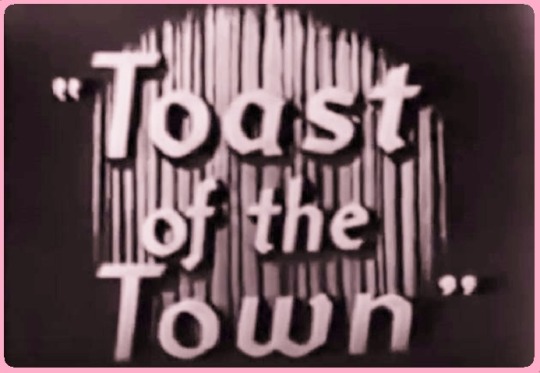
Directed by Robert Bleyer and John Moffitt
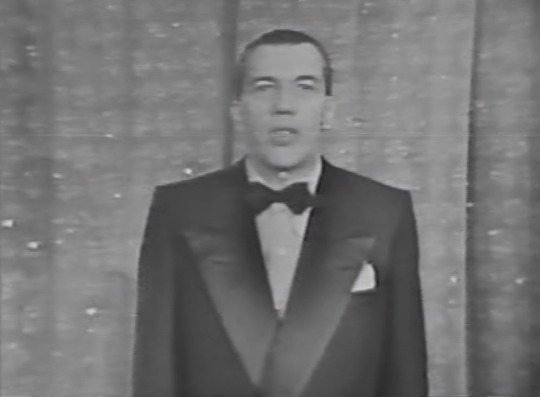
Ed Sullivan (Host) was a preeminent television variety show host who is best remembered for hosting his own show, at first titled “Toast of the Town” but later simply known as “The Ed Sullivan Show,” which became a staple of Sunday night viewing for millions of Americans from 1948 to 1971. As such, his name was often mentioned on “I Love Lucy” and Lucille Ball’s subsequent sitcoms. He introduced America to such entertainers as Elvis Presley, The Beatles, and The Supremes. Sullivan entered icon status when he and his television show were worked into the plot of the Broadway musical Bye Bye Birdie in 1960. The musical includes the song “Hymn for a Sunday Evening” which has a chorus that repeats Sullivan’s name in a choir-like harmony. Hope made an appearance in the 1964 film version. The theatre on Broadway in New York City where Sullivan did his weekly show was named after him in 1967. He died in 1974.

Dore Schary (Himself) was born Isadore Schary in Newark, New Jersey, in 1905. After working on Broadway he went to Hollywood were he eventually became head of MGM in 1948, ousting its founder Louis B. Mayer. He would helm the studio until 1956 and was in charge during Lucy and Desi’s filming of The Long, Long Trailer and Forever, Darling. In 1955 he was supposed to play himself on “I Love Lucy,” but backed out at the last moment and he was played by Phil Ober (Vivian Vance's husband) instead.
The MGM Stars
Lucille Ball (Herself / Tacy Collini from The Long, Long Trailer) was born on August 6, 1911 in Jamestown, New York. She began her screen career in 1933 and was known in Hollywood as ‘Queen of the B’s’ due to her many appearances in ‘B’ movies. With Richard Denning, she starred in a radio program titled “My Favorite Husband” which eventually led to the creation of “I Love Lucy,” a television situation comedy in which she co-starred with her real-life husband, Latin bandleader Desi Arnaz. The program was phenomenally successful, allowing the couple to purchase what was once RKO Studios, re-naming it Desilu. When the show ended in 1960 (in an hour-long format known as “The Lucy-Desi Comedy Hour”) so did Lucy and Desi’s marriage. In 1962, hoping to keep Desilu financially solvent, Lucy returned to the sitcom format with “The Lucy Show,” which lasted six seasons. She followed that with a similar sitcom “Here’s Lucy” co-starring with her real-life children, Lucie and Desi Jr., as well as Gale Gordon, who had joined the cast of “The Lucy Show” during season two. Before her death in 1989, Lucy made one more attempt at a sitcom with “Life With Lucy,” also with Gordon, which was not a success and was canceled after just 13 episodes.
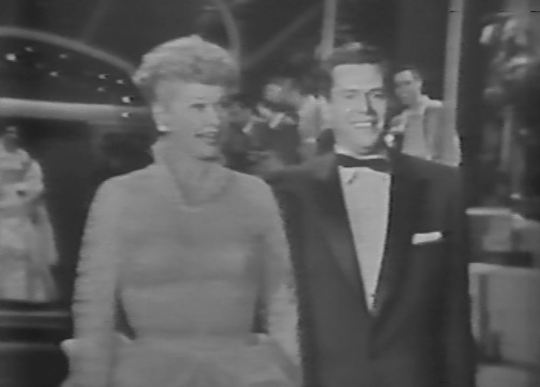
Desi Arnaz (Himself / Nick Collini from The Long, Long Trailer) was born in Cuba in 1917 and immigrated to America as a youngster. He was a musician who married Lucille Ball in 1940 after meeting her on the set of 1939’s Too Many Girls, which he had done on stage in New York. In order to keep him ‘off the road’ Ball convinced producers to cast him as her husband in a new television project based on her radio show “My Favorite Husband.” The network was convinced. In 1951, Arnaz and Ball began playing Lucy and Ricky Ricardo, roles they would be identified with for the rest of their lives. The couple had two children together, Lucie and Desi Jr. In 1960, Ball and Arnaz divorced. Desi became a producer, responsible for such hits as “The Mothers-in-Law” (1967-69). He re-married in 1963. Desi Aranz died in 1986, just a few years before Ball.
Lucy and Desi enter to the tune of “The I Love Lucy Theme”.
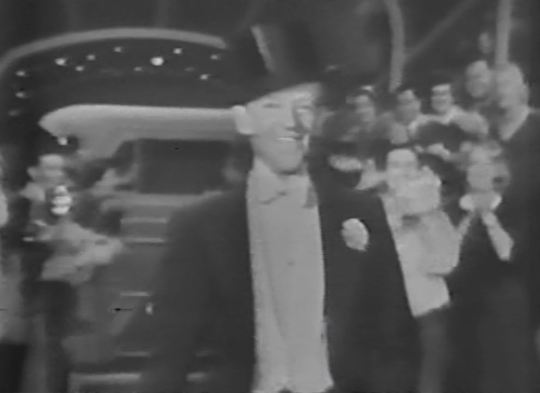
Fred Astaire (Himself / Tom Bowen from Royal Wedding / Don Hewes from Easter Parade) was one of the most famous performers in Hollywood, known for his dancing, singing, and directing. He did four films with Lucille Ball between 1935 and 1945, three with his dance partner, Ginger Rogers. Astaire received an honorary Oscar in 1950. He died in 1987 at age 88.
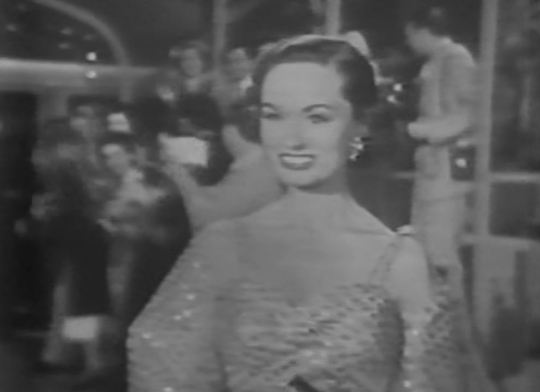
Ann Blyth (Herself / Kathie Ruder from The Student Prince) was nominated for an Oscar for her appearance in 1945's Mildred Pierce. Blyth was equally at home in musicals, a specialty of MGM.
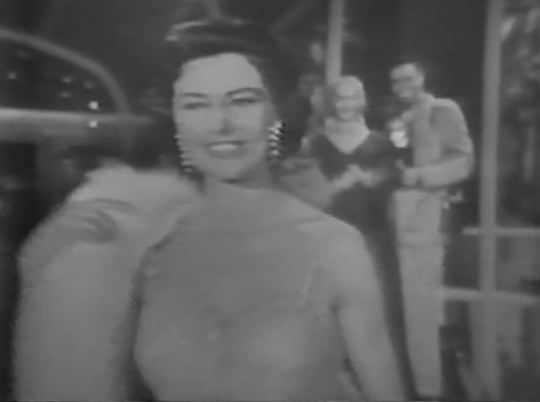
Cy Charisse (Herself) was born Tula Ellice Finklea in Amarillo, Texas. She was best known as a dancer in the MGM movie musicals of the 1950s. She did two films with Lucille Ball in the mid-1940s. She died in 2008 at age 86.
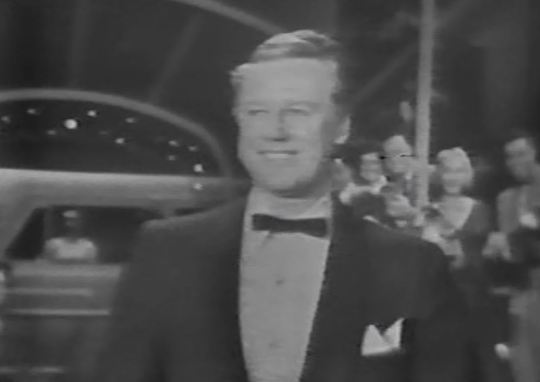
Van Johnson (Himself) co-starred in Too Many Girls (1940), the film that introduced Lucille Ball to Desi Arnaz. He was also seen with Lucy in the films Easy to Wed (1946) and the recently released Yours, Mine and Ours in 1968. He played himself on one of the most popular episodes of “I Love Lucy,” “The Dancing Star” (ILL S4;E27) as well as an episode of “The Lucy Show.” He starred in The Romance of Rosy Ridge (1947) and the 1954 film The Caine Mutiny. He died in 2008 at age 92.

Howard Keel (Himself / Adam from Seven Brides for Seven Brothers / Frank Butler from Annie Get Your Gun) was discovered by Oscar Hammerstein II during auditions for John Raitt’s replacement in Broadway’s Carousel in 1946. After that, he also went on to play Curly in Oklahoma! He is probably best remembered for his role in MGM’s Seven Brides for Seven Brothers (1954), a film that was mentioned on “I Love Lucy.” On TV he played Clayton Farlow on “Dallas” (1981-91). His only acting appearance with Lucille Ball was on a 1969 episode of “Here's Lucy.” Keel died in 2004.
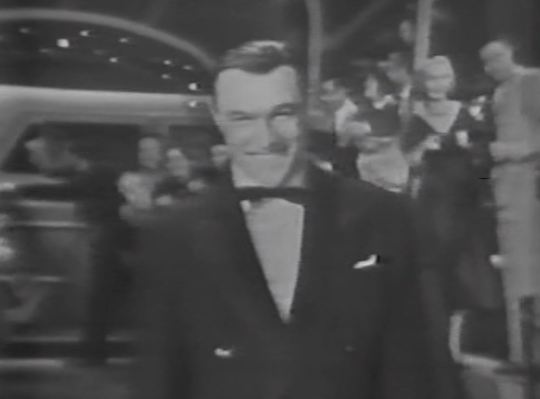
Gene Kelly (Himself / Don Lockwood from Singin' in the Rain) was an Oscar-winning performer who did four films with Lucille Ball between 1943 and 1967. In 1978 Lucille Ball was seen on the TV tribute special “Gene Kelly: An American in Pasadena.” In 1980, Kelly turned up on “Lucy Moves To NBC.” A Hollywood legend for his effortless dancing, Kelly died in 1996 at age 83.

Ann Miller (Herself) was a performer best known for her singing and tap dancing in movie musicals, as well as her shapely legs. It is said that she was discovered by Lucille Ball while doing a show at a nightclub in San Francisco. She subsequently did four films with Lucille Ball, including Too Many Girls (1940), the film that introduced Lucy to Desi Arnaz. Miller died in 2004 at age 80.

Walter Pidgeon (Himself / Frederick Alderson from Executive Suite) was a Canadian-born actor who was nominated for two Oscars in 1942 and 1943. He died in 1984 at age 87.
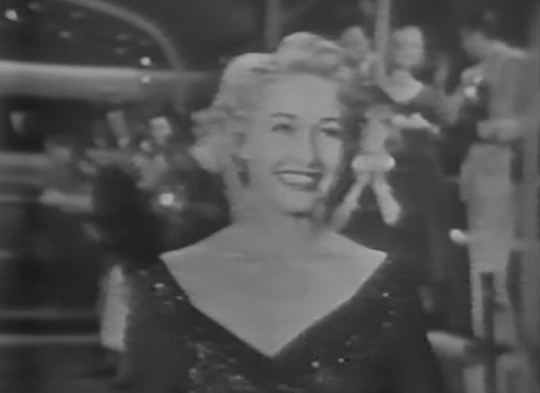
Jane Powell (Herself / Ellen Bowen from Royal Wedding) was best known for her role as Milly in Seven Brides for Seven Brothers (1954). After 1957, her film roles disappeared and Powell began performing on stage.
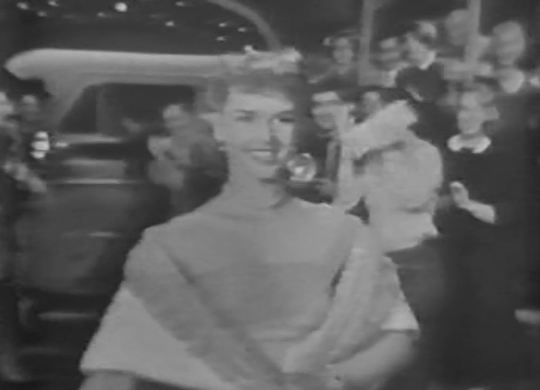
Debbie Reynolds (Herself) was nominated for an Oscar for playing The Unsinkable Molly Brown in 1964. Her first big hit was playing Kathy Selden in MGM's Singin' in the Rain in 1952. She died in 2016 at age 86.
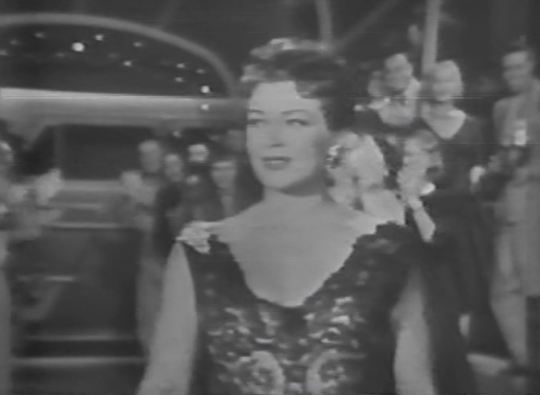
Lana Turner (Herself) was one of Hollywood's most popular actresses and also a favorite of Fred Mertz. She was best known for her femme fatale roles. She was nominated for an Oscar in 1957 for Peyton Place. Turner was seen with Lucille Ball in Du Barry Was A Lady (1943). She died in 1995 at age 74.
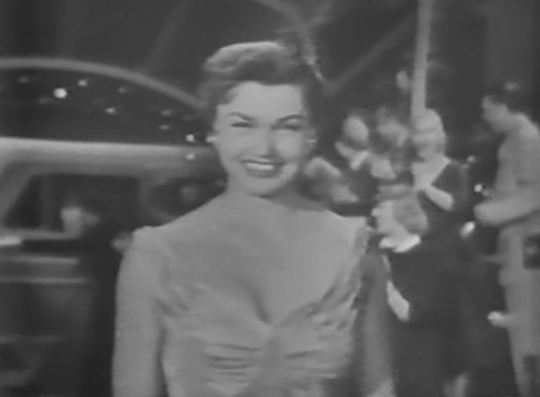
Esther Williams (Herself / Eve Barrett from Neptune's Daughter) was an actress best known for her aquatic roles. Lucille Ball starred with Williams in Easy to Wed (1946) and Ziegfeld Follies (1945). Williams was mentioned on “I Love Lucy” in 1955.
Also Appearing
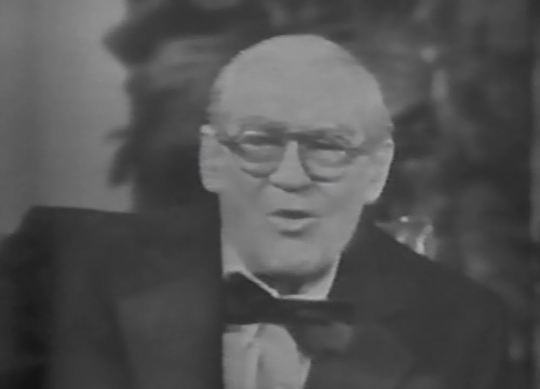
Lionel Barrymore (Himself) was the patriarch of the Barrymore acting family of stage and screen. His most famous role was that of the nefarious banker Mr. Potter in It's A Wonderful Life (1946). Barrymore had difficulty walking later in life, which accounts for the fact that he does not enter with the other MGM stars in the opening number, and why he is discovered sitting in the screening room after the first clips segment.
Edmund Purdom (Prince Karl from The Student Prince) was an English-born actor who also appeared in MGM's Julius Caesar. Purdom holds the distinction of being the only personality to have their hand/footprints removed from the forecourt of Grauman's Chinese Theater because industry insiders felt the honor was too soon, having only done three credited films. He spent his later life in Italy and died there in 2009.
Johnny Green (Himself, Conductor) was a composer and MGM's General Musical Director. He conducts the orchestra for the program.
Julia Meade (Herself, Mercury Spokeswoman) became a household name showing off dream cars of the '50s like Lincoln and Mercury bedecked in evening dresses and strings of pearls, while describing the cars with perfectly manicured hands running up and down the upholstery. She died in 2016 at age 90.
ANNIVERSARY TRIVIA
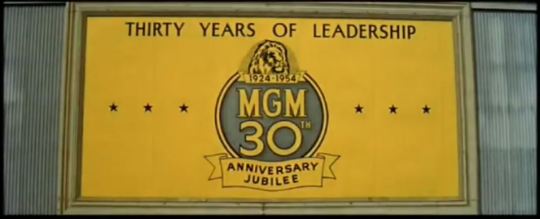
To mark their 30th anniversary, MGM also had a ten-minute orchestral overture produced for symphony orchestra comprised of themes from eleven of their great musicals. Johnny Green conducted the overture, which was filmed in Cinemascope and in color to run along with their motion pictures in cinemas.
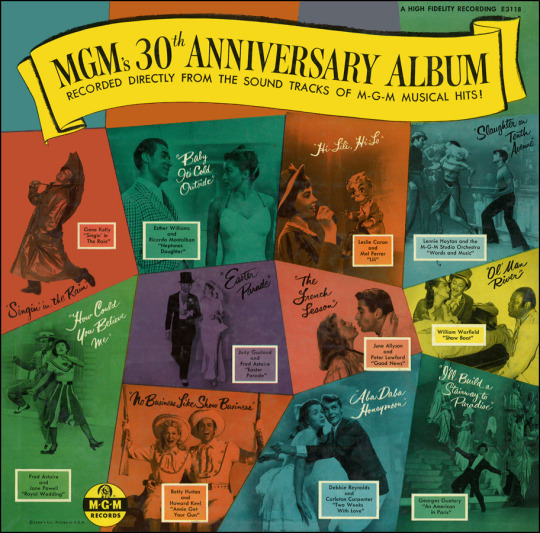
MGM also issued a record album consisting of excerpts from the soundtracks of many of their musicals.
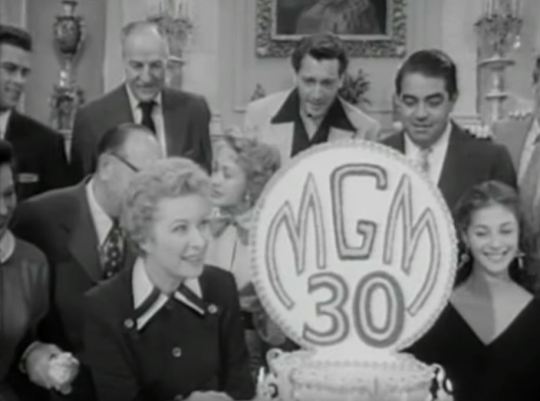
MGM also hosted a press event with a small number of their stars which turned up on newsreels nationwide. Louis B. Mayer and Dore Schary shook hands in front of a large cake.
TOAST OF THE TOWN
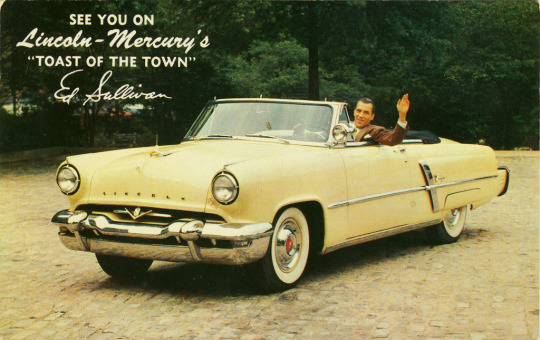
After Ed Sullivan makes some welcoming remarks, the opening number introduces the celebrities, who get out of a white limousine and walk the red carpet, greeted by fans who shout their name and the cameras of the press. These celebrities included Lucy and Desi, who are the only couple introduced and the only ones only introduced by just their first names.
Sullivan introduces MGM studio executive Dore Schary, who invites him to his private screening room. This is actually just an adjacent set on the soundstage.
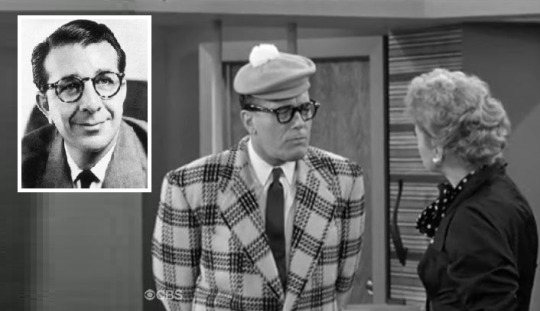
One year later, Schary was to play himself on an episode of “I Love Lucy,” but withdrew at the last moment. The role was taken by Vivian Vance's husband, Phil Ober. Some said that Schary was reluctant to do television as it was supplanting MGM's film attendance, but Schary's official reason was illness. Because Ricky Ricardo (like the Arnazes) would work for MGM, it made sense to mention Schary's name early in the Hollywood episodes. Lucy's forgetful mother, Mrs. McGillicuddy (Kathryn Card), often said “Who's Dore Schary?”
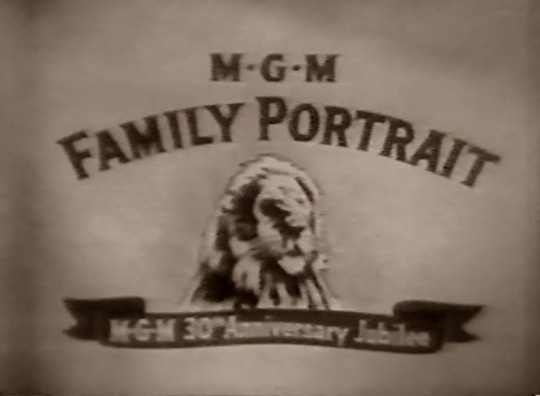
In the screening room, Sullivan and Schary engage in some friendly banter (obviously read off teleprompters) in which Schary gets in a plug for MGM's upcoming film Julius Caesar directed by Joseph Mankewicz. Sullivan introduces a retrospect of MGM's first three decades, which includes a title card, and a film clip for the following movies:
THE BIG PARADE (1924) starring John Gilbert and Rene Adoree
BEN HUR (1925) starring Ramon Novarro and Francis X. Bushman
MIN AND BILL (1930) starring Wallace Beery and Marie Dressler
DINNER AT EIGHT (1933) starring Marie Dressler and Jean Harlow
MUTINY ON THE BOUNTY (1935) starring Charles Laughton and Clark Gable
SAN FRANCISCO (1936) starring Clark Gable and Jeanette MacDonald
BOYS TOWN (1938) starring Mickey Rooney and Spencer Tracy
GRAND HOTEL (1932) starring Greta Garbo and John Barrymore
A NIGHT AT THE OPERA (1935) starring Groucho Marx and Margaret Dumont
THE PHILADELPHIA STORY (1940) starring Katharine Hepburn and Cary Grant
GONE WITH THE WIND (1939) staring Clark Gable and Vivien Leigh
Sullivan adds that Gone With The Wind will be re-released in 1954. He mentions a few films that were not included in the clips: Mrs. Miniver, The Yearling, Battleground, Ivanhoe, Mogambo, Quo Vadis and Knights of the Roundtable.
Noticeable by its absence is The Wizard of Oz (1939) which (a lot like Lucille Ball herself) was only considered a classic after being seen repeatedly on television. The musical fantasy film was not aired on TV until 1956, two years after this program.

When the tribute is over, Sullivan and Schary are joined in the screening room by Lionel Barrymore, the patriarch of the fabled Drew / Barrymore acting dynasty. Barrymore introduces a young singer named Debbie Reynolds, who, dressed in overalls in a backstage setting, performs a number called “Applause, Applause” which she sang in the 1953 MGM musical Give A Girl A Break.
Blooper Alert! After the number, when Sullivan and Schary are seen in front of the curtain, the audio cuts out and only slowly returns during their conversation.

Sullivan and Schary do a live promo for their sponsor, Mercury automobiles. Schary says that Mercury cars were prominently featured in their new film The Long, Long Trailer and screens a montage of clips from the Vincente Minnelli film. Although most of the clips are of the car (which towed the title trailer), there is one classic clip of Lucy trying to make dinner in the moving trailer and one of Desi singing – both stars doing what they did best. The film premiered four days after this program aired.
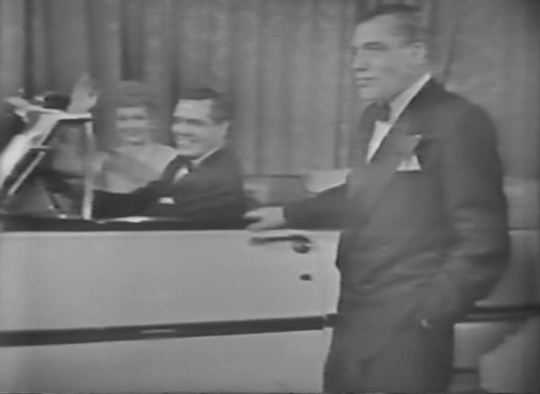
After the clips, Sullivan is standing in front of a brand new 1954 Mercury which contains Lucille Ball and Desi Arnaz in the front seat. (The car in the film was a 1953 model.) Sullivan reminds the audience that he gave Lucy and Desi the Emmy Award for “I Love Lucy” sponsored by Philip Morris. Desi has a couple of lines; Lucille merely laughs.
Blooper Alert: During the Mercury spot, Sullivan is looking into the wrong camera.
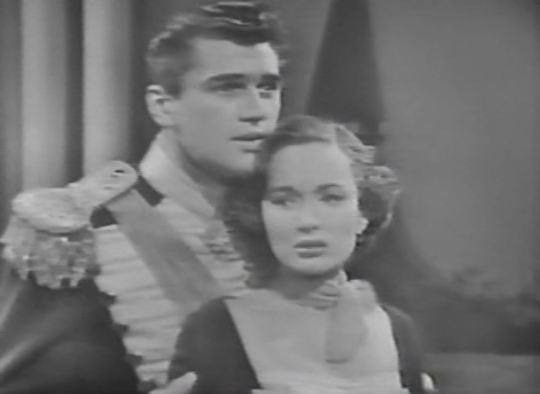
Hearing orchestral music, Sullivan approaches Dore Schary who introduces Edmund Purdom and Ann Blyth doing a live scene from their upcoming film The Student Prince, which will be released in June 1954. Because Purdom's singing voice was dubbed by Mario Lanza in the finished film, he does not sing, although Blyth performs “Deep in My Heart, Dear.”
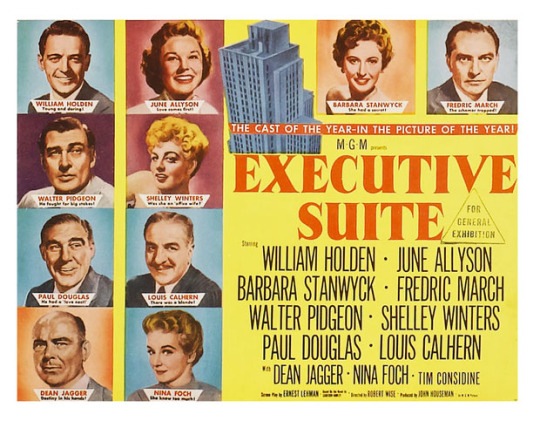
Back in the screening room, Sullivan and Schary promote Ann Blyth's appearance in the upcoming MGM film Rosemarie. Schary presents a promo for the new film Executive Suite, which features William Holden, June Allyson, Barbara Stanwyck, Frederic March, Walter Pidgeon, Shelley Winters, Paul Douglas, Dean Jagger, and Nina Foch. Douglas, Winters, and Douglas would all guest star in “Lucy” sitcoms.
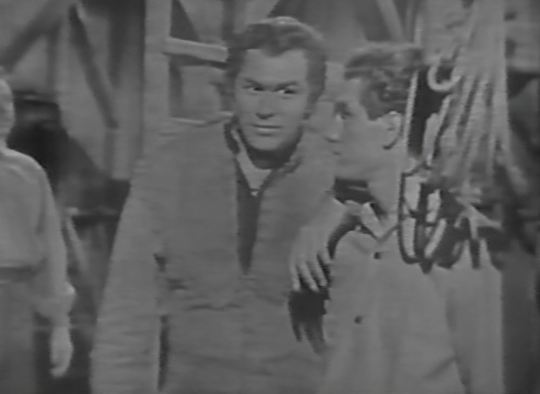
Schary introduces Howard Keel from the upcoming MGM musical Seven Brides for Seven Brothers. Stepping into a barn setting, Keel becomes Adam, his character in the film, and along with his six 'brothers' sings “Sobbin' Women.” The film opened in July 1954. In March 1956 it was mentioned on “I Love Lucy.”
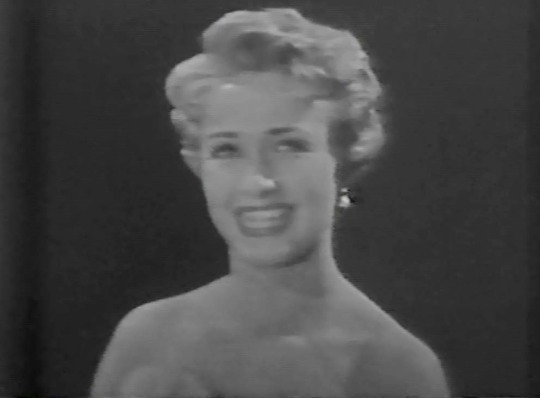
Sullivan introduces the evening's conductor Johnny Green, and Jane Powell, who sings “The Jewel Song” from the opera Faust by Charles Gounod.
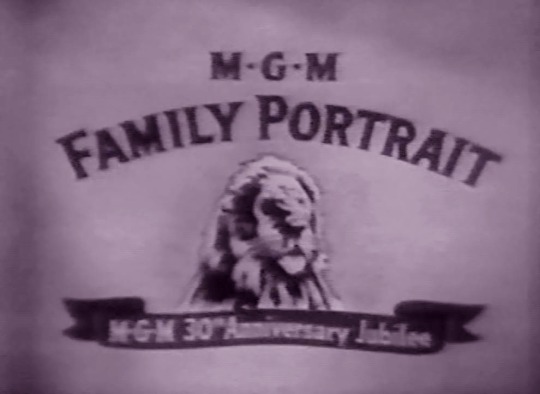
Back in the screening room, Schary introduces another round of clips, this time from famous MGM musicals:
ANNIE GET YOUR GUN (1950) starring Betty Hutton, Howard Keel, Keenan Wynn and Louis Calhern singing “There's No Business Like Show Business” by Irving Berlin
NEPTUNE'S DAUGHTER (1949) starring Esther Williams and Ricardo Montalban singing “Baby, It's Cold Outside” by Frank Loesser
SINGIN' IN THE RAIN (1952) starring Gene Kelly singing “Singin' in the Rain” by Nacio Herb Brown and Arthur Freed
ROYAL WEDDING (1951) starring Fred Astaire and Jane Powell singing “How Could You Believe Me When I Said I Loved You When You Know I've Been A Liar All My Life” by Burton Lane and Alan J. Lerner
BECAUSE YOU'RE MINE (1952) starring Mario Lanza and Doretta Morrow singing “Because You're Mine” by Nicholas Brodzsky and Sammy Cahn
EASTER PARADE (1948) starring Judy Garland and Fred Astaire singing “Easter Parade” by Irving Berlin
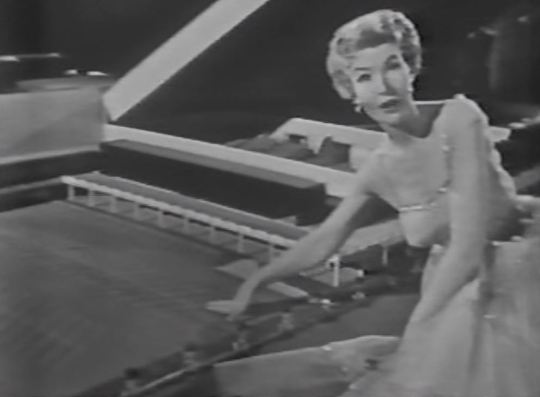
Back in the screening room, Ed Sullivan informs the audience that the show is coming from the brand new CBS Television City in Hollywood. Julia Meade shows the model of Television City. This is the same model shown by Jack Benny on “Stars in the Eye” the show that celebrated the new studio in 1952. It also featured Lucy and Desi. Meade turns this segment into a live commercial for Mercury.
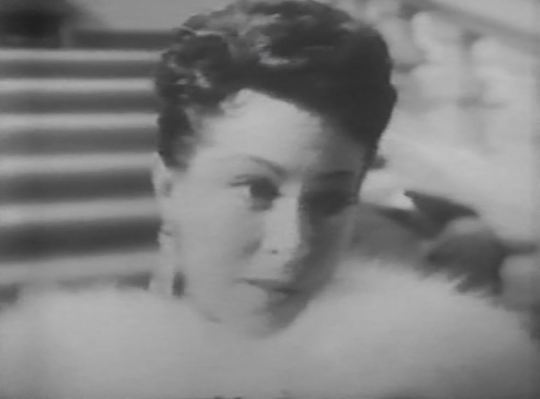
Dore Schary introduces Lana Turner (backed up by Nick Anderson, John Erickson, Steve Forest, Edmond Purdom) who perform “A Great Lady Has an Interview,” by Roger Edens and Kay Thompson, a song sequence originally performed by Judy Garland in Ziegfeld Follies, a 1946 film that also starred Lucille Ball.
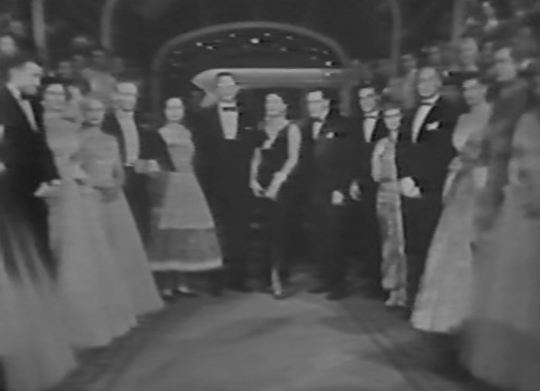
Surrounded by the MGM stars, Sullivan and Schary say goodnight.
On This Date in Lucy History ~ February 14
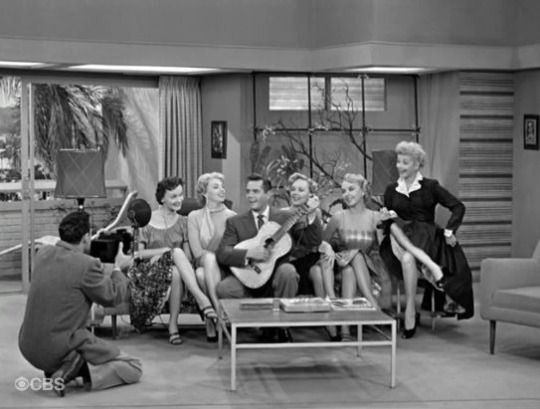
"Don Juan and the Starlets" (ILL S4;E18) ~ February 14, 1955
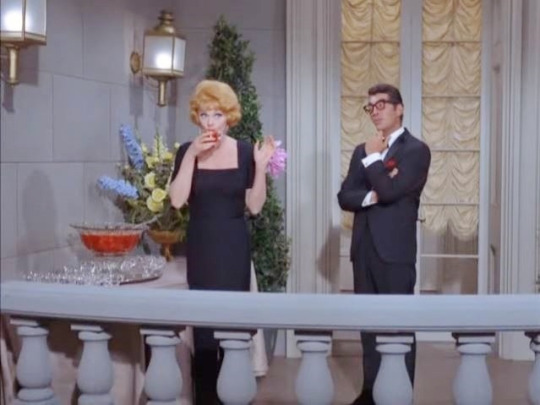
“Lucy Dates Dean Martin” (TLS S4;E21) ~ February 14, 1966
#MGM#Toast of the Town#The Ed Sullivan Show#Ed Sullivan#Dore Schary#Lucille Ball#Desi Arnaz#30th Anniversary#CBS#Television City#1954#TV#Lionel Barrymore#Debbie Reynolds#Fred Astaire#Lana Turner#Julia Meade#Jane Powell#Ann Blyth#Van Johnson#Ann Miller#Walter Pigeon#Howard Keel#Edmond Purdom#Esther Williams#Gene Kelly#Cyd Charisse
13 notes
·
View notes
Text
Huawei-sponsored event draws flag-waving B.C. politicians
On the heels of Canadians Michael Spavor and Michael Kovrig being released from a Chinse prison, Huawei Canada sponsored a Chinese government-linked cultural event in Vancouver Saturday, with B.C. politicians in attendance waving both Canadian and Chinese flags.
Meanwhile, on the same day, the burning of a Chinese flag by pro-democracy and Tibetan and Uyghur activists highlighted a protest at China’s consul general compound on Granville Street. The cultural event was the third Chinese Cultural And Arts Festival hosted at Jack Poole Plaza by the Canadian Alliance of Chinese Associations. Among those attending were Liberal-appointed independent Senator Yuen Pau Woo, B.C. Minister of State for Trade George Chow, Burnaby councillor James Wang, Richmond councillors Alexa Loo and Chak Au, and Vancouver mayoral candidate Ken Sim.
The event was one of many Chinese cultural events tied to China’s consul general in Vancouver last weekend, in conjunction with celebrations for the National Day of the People’s Republic of China, also known as the Golden Week Holiday.
The event featured dragon dancing and promoted the upcoming 2022 Winter Olympic Games in Beijing, which are mired in an international boycott to draw attention to China’s human rights abuses – a campaign that has majority support among polled Canadians.
Chow also attended a Chinatown event with Consul General Tong Xiaoling, to commemorate the Chinese Communist Party’s postwar ascent to power, as well as the 110th anniversary of the 1911 Revolution.
Such events, often known as “soft diplomacy,” had been common practise before the coronavirus pandemic but become rare with gathering restrictions coupled with greater tensions between Canada and China, particularly due to the detention of Spavor and Kovrig immediately following the December 2018 arrest of Huawei CFO Meng Wanzhou in Vancouver on fraud charges in the United States.
This one was the first public event sponsored by Huawei Canada, following the release of Meng from her extradition process (and subsequent release of Kovrig and Spavor). Overarching questions following the extradition process include whether Canada will now ban Huawei from its telecommunications networks, on grounds of cybersecurity and Chinese state-led espionage, as have all of its national security allies, and whether the country will continue to forge ahead with more extensive trade ties with Beijing. China is interested in establishing Huawei overseas and has a large appetite for Canadian resources and energy. However, questions persist on whether Canadians want to do business with the authoritarian regime.
The Liberals maintained power in a minority government with a platform silent on such matters. With a platform much more critical of China, the Conservatives lost their bid to take control in Ottawa and may have lost seats in ridings with large Chinese populations due to perceived Chinese government interference.
Chow was not immediately available for comment. It’s unclear whether his attendance is an indication that the BC NDP provincial government is set to encourage trade ties with China. Minister of Jobs, Economic Recovery and Innovation Ravi Kahlon oversees Chow’s ministerial post. This summer, when asked if his government intended to strengthen trade ties with China or diversify, Kahlon affirmed the latter.
Despite the persistent tension, Canadian exports to China rose in 2020 to $24.5 billion – up from $22.4 billion in 2019; those 2020 exports to China far exceeded all previous years on record other than 2018 ($26.8 billion). B.C. accounted for $5.7 billion of the 2020 exports, which was the lowest total since 2016 when the BC Liberal government signed the province up to China’s controversial Belt and Road Initiative.
Chinese-Canadian businessmen lead the Canadian Alliance of Chinese Associations. The alliance states online it aims to promote “unity and cooperation between Chinese communities” while participating in select philanthropic efforts such as disaster relief.
While it has claimed to be apolitical, it also claims to “actively participate in various activities of the Overseas Chinese Affairs Office and the Chinese Overseas Chinese Federation,” which are Chinese government-affiliated entities, identified as parts of the CCP’s United Front Work Department. Among its stated goals in Canada is to promote Chinese sovereignty in the South China Sea.
Also on Saturday, activists co-organized by the group Vancouver Society in Support of Democratic Movement gathered outside China’s consul general to raise more awareness for China’s treatment of Uygur Muslims in East Turkistan (Xinjiang Autonomous Region), which the House of Commons has labelled as genocide; dismantling of Hong Kong’s democratic system, and sustained intrusions on Tibetan culture.
“We request the Canadian government put pressure on China for the release of these political prisoners,” stated the group online, in condemnation of “hostage diplomacy.” Following the release of the two Michaels and Meng, it was the unelected Senator Woo who shared an op-ed on Twitter on September 25 deeming Meng as a “hostage” of Canada. Such a view drew scorn from many, most notably former Conservative immigration minister Chris Alexander, who tweeted: “Mouthpieces for foreign propaganda, including those backed by China’s United Front Work Department, should have no place in Canada’s parliament.”
Woo responded publicly by saying he was a victim of racism due to Alexander’s comments. On Monday Alexander condemned the racism but he stood by his words, the Canadian Press reported.
0 notes